Our next stop was Spitzkoppe, a group of beautiful granite peaks rising out of the Namib Desert. We have an awesome GPS in our vehicle but for some reason it took us on a totally wild route to get to Spitzkoppe via some rough tracks through the wilderness. Our vehicle coped well and ‘Jungle Man’ Logan drove like a champ – and we had lots of waves from locals, probably wondering why we were so far from the main road!
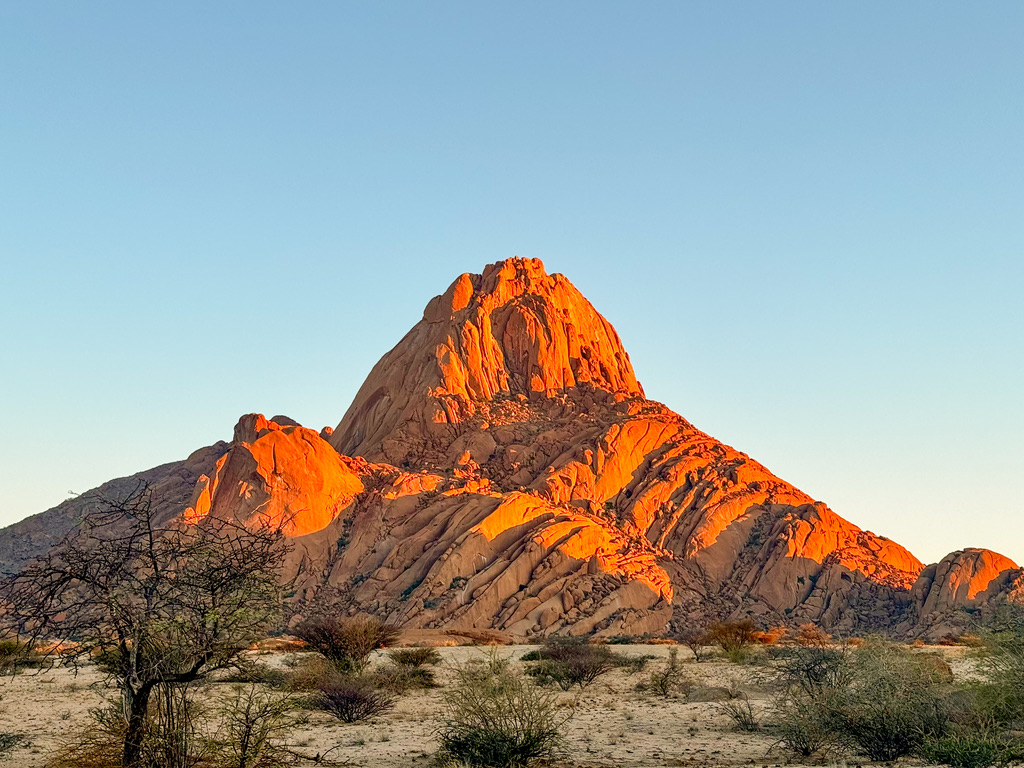
We spent two days playing on the rocks at Spitzkoppe. A lot of the rocks can only be visited with a guide but we opted to do our own thing – rock-hopping, chilling, and watching more stunning sunrises and sunsets.
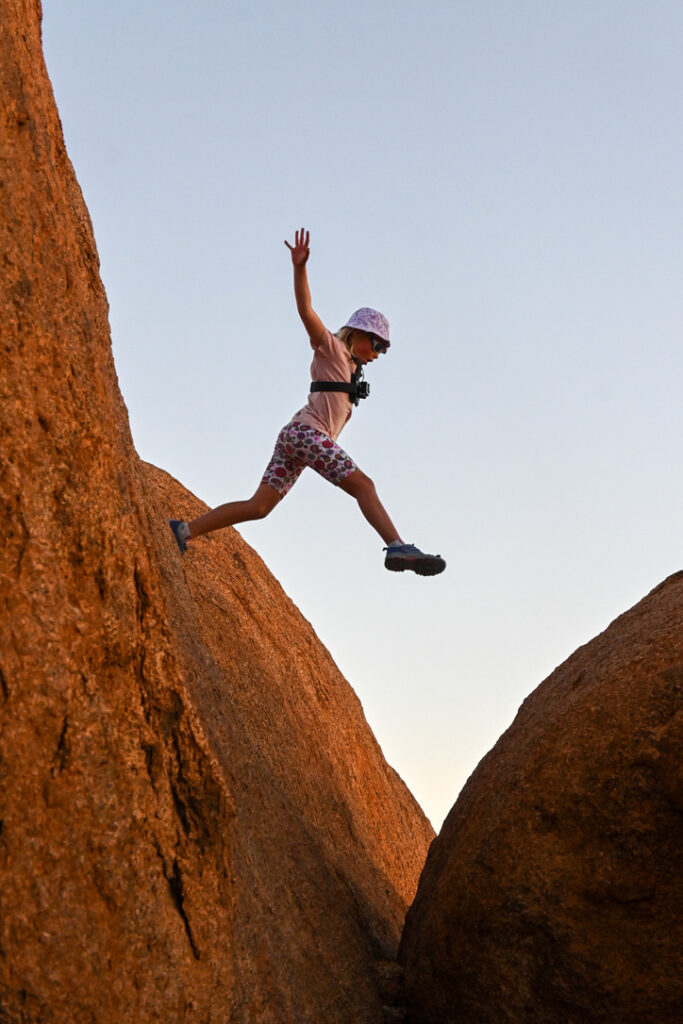
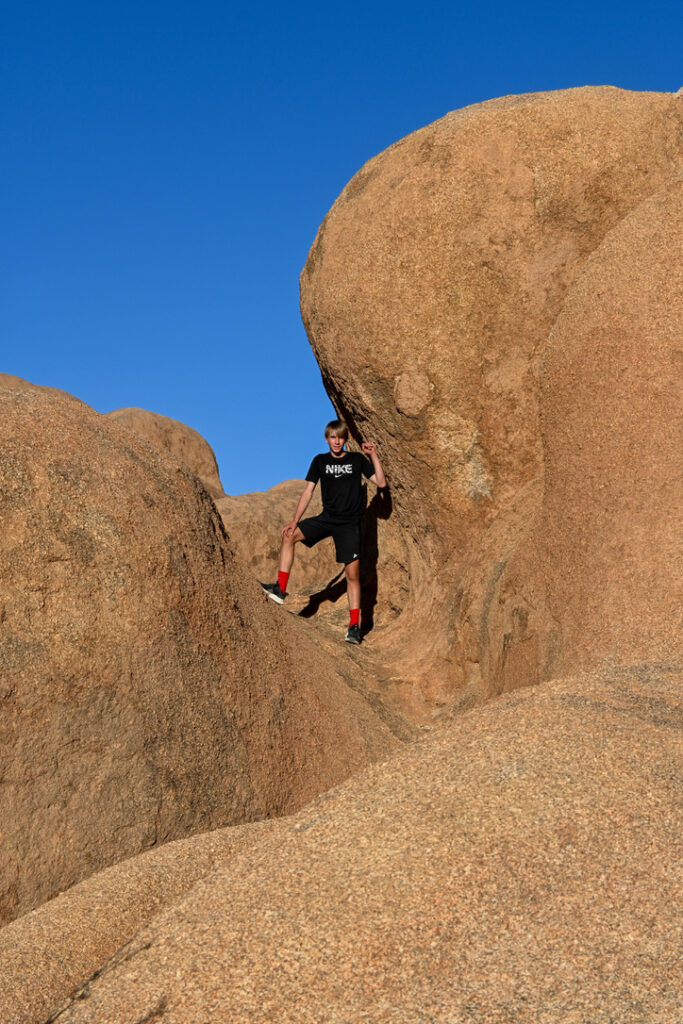


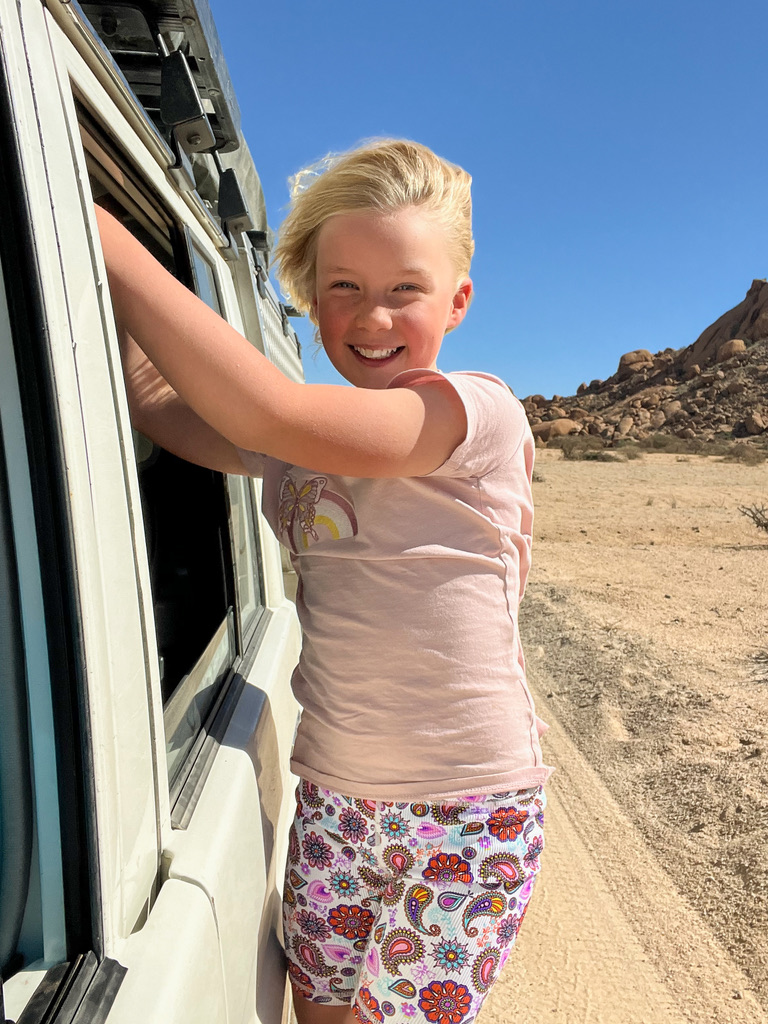
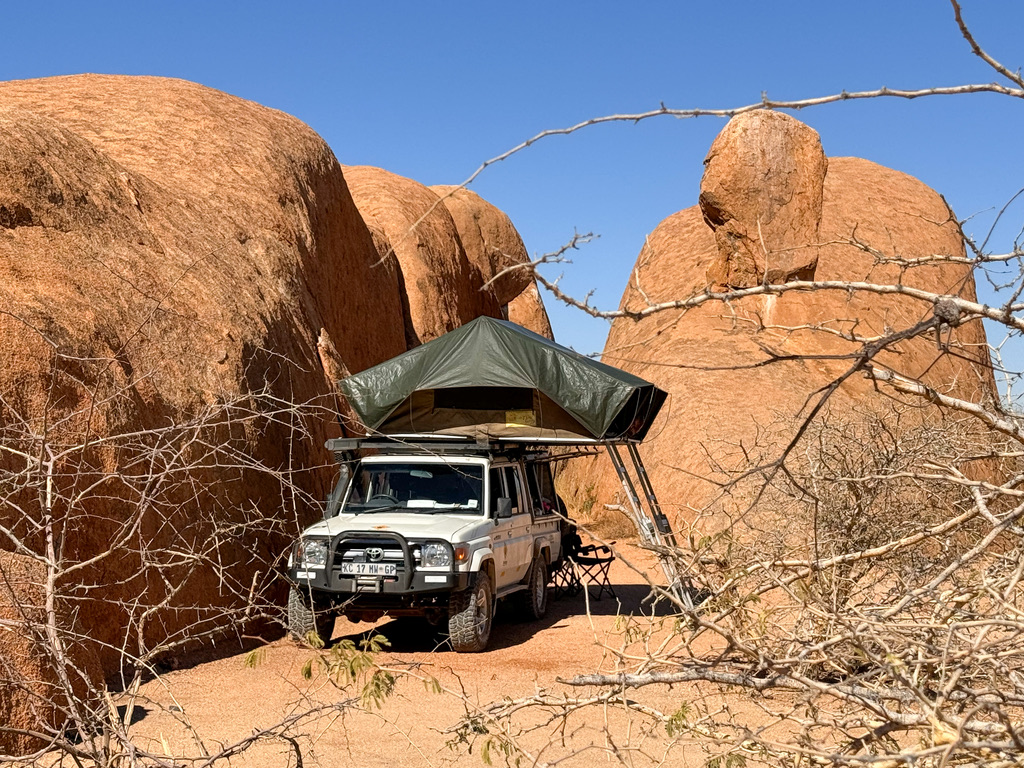
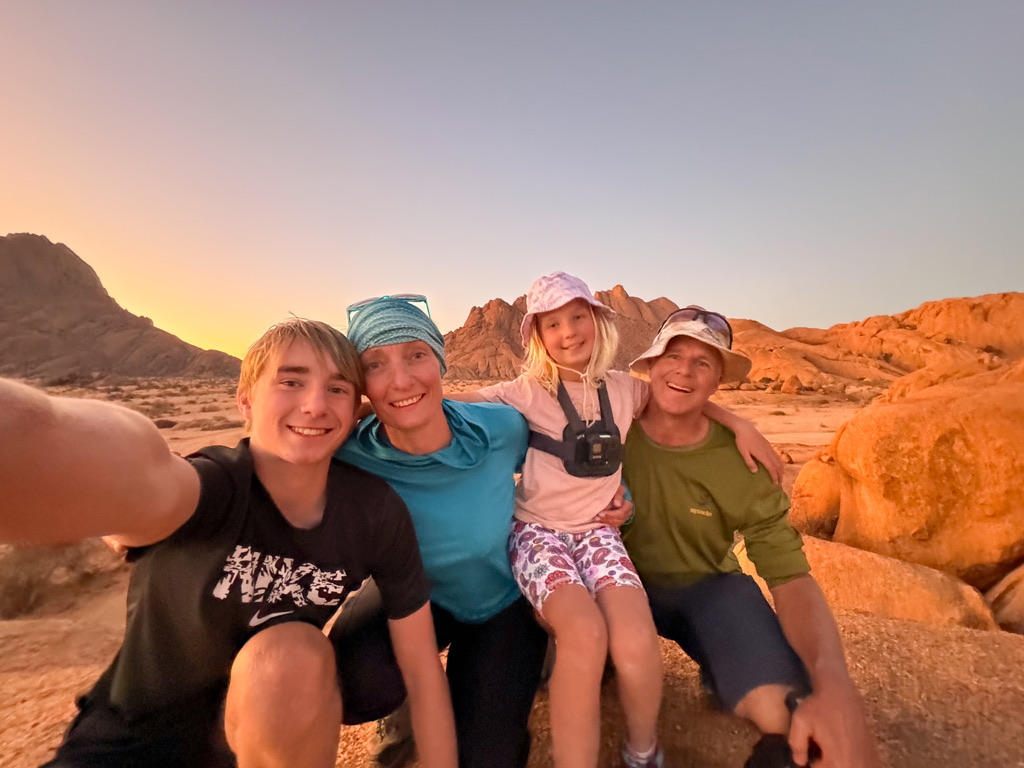
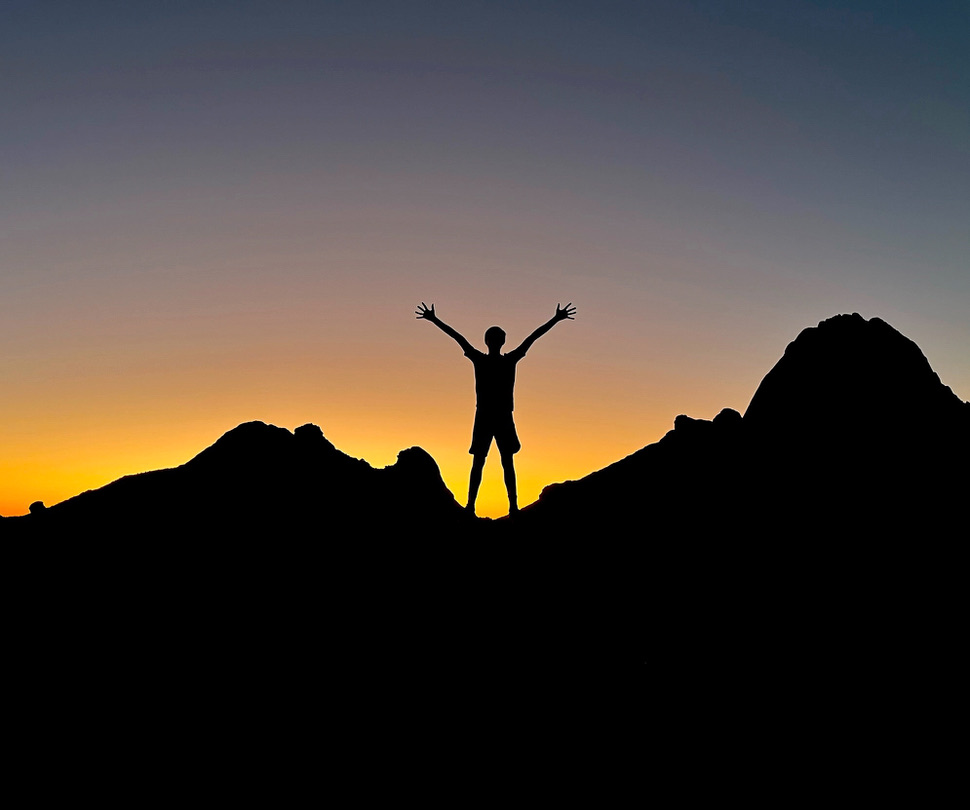
From Spitzkoppe, we headed back out to the coast, enjoying some lovely wild (free) camping along the gorgeous beaches before entering the Skeleton Coast National Park.

The Skeleton Coast is so named for the bones of washed up seals and whales (mostly due to past whaling and sealing operations), but also for the hundreds of ships that have been wrecked here, as recently as 2008, due to thick fog, rough sea, unpredictable currents and stormy winds. In times gone by, the sailors who were able to make it ashore stood little chance of survival on this inhospitable coast.
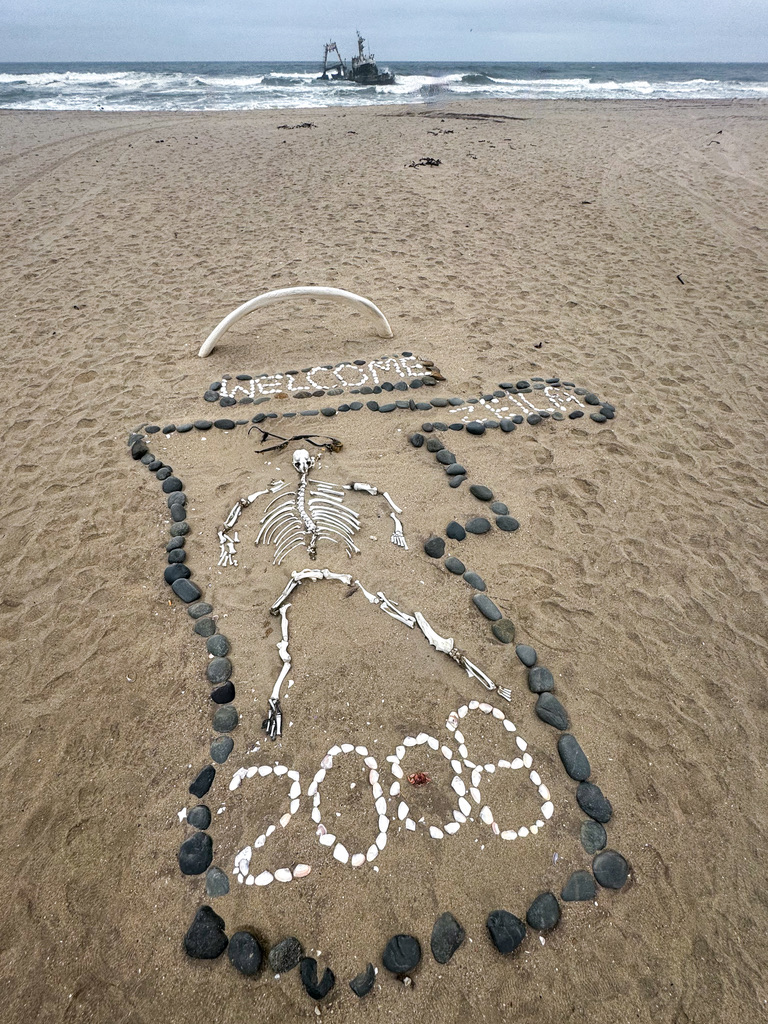

At the south end of the National Park is the Cape Cross Seal Reserve – the world’s largest breeding colony of Cape fur seals (closely related to the NZ fur seals I worked with years ago). Whilst the population of seals is greatest during the breeding months (around 210000 seals!), there were still thousands and thousands of females, pups, and juveniles. The smell and the noise was overwhelming!
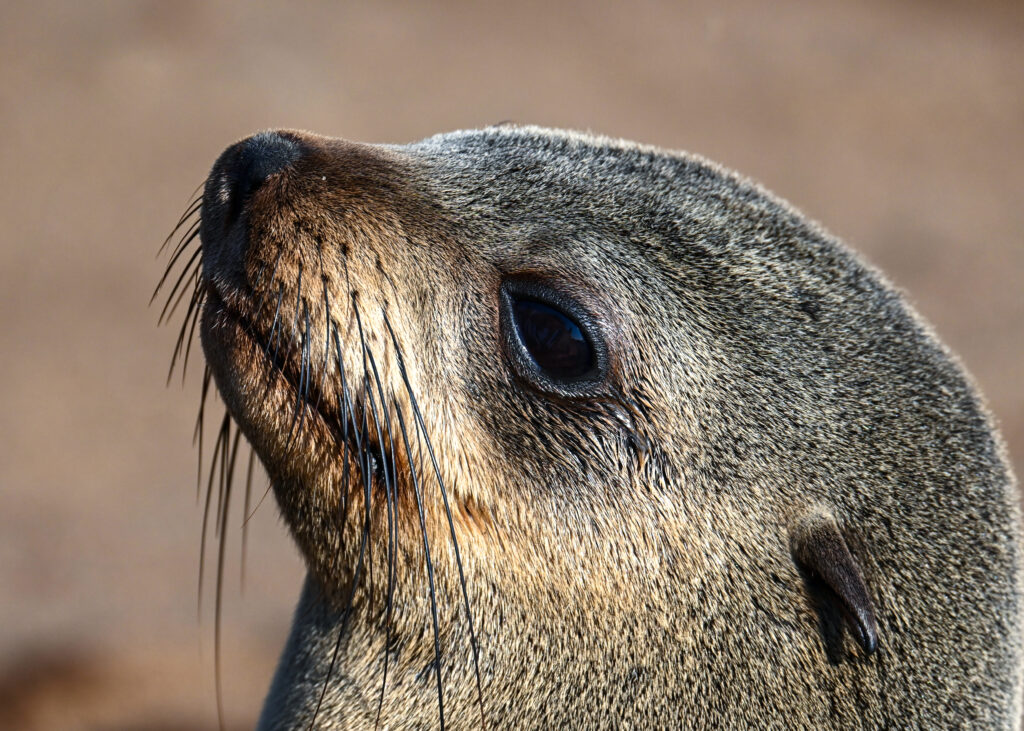

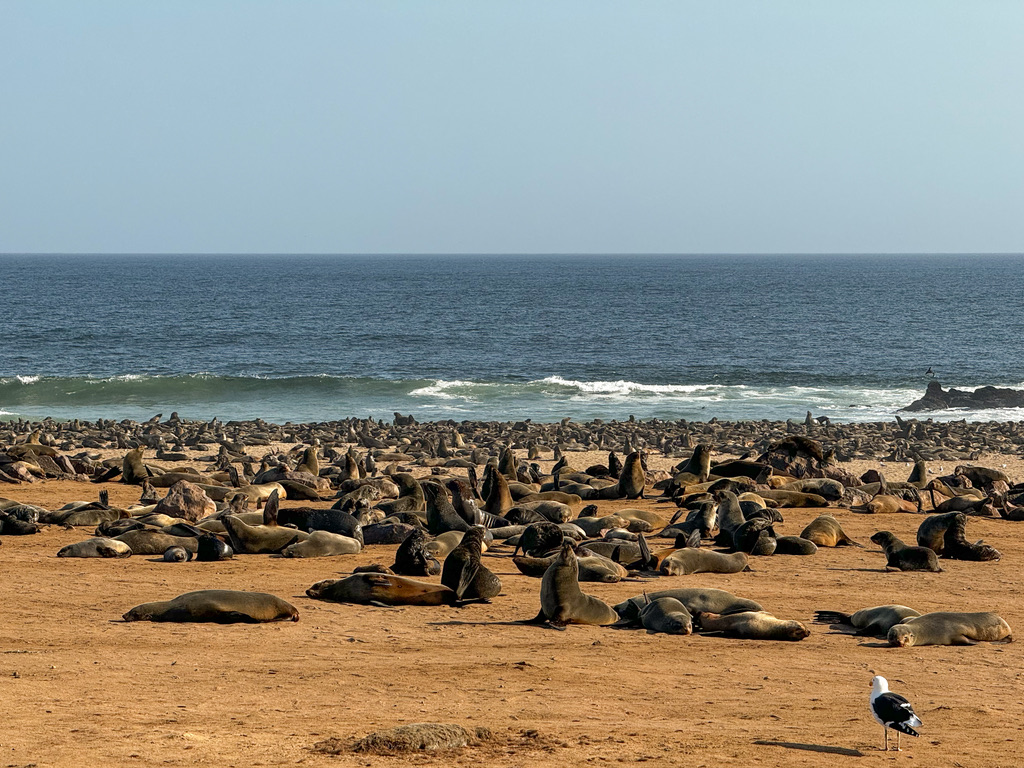
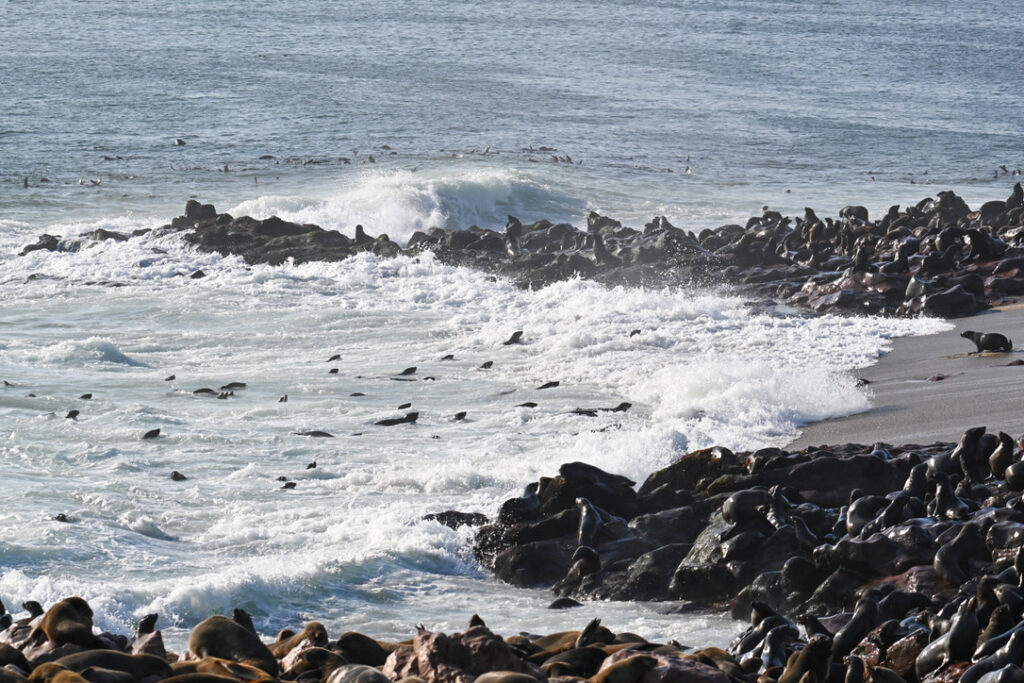
We thoroughly enjoyed the wild coast and were glad for the time we spent there.
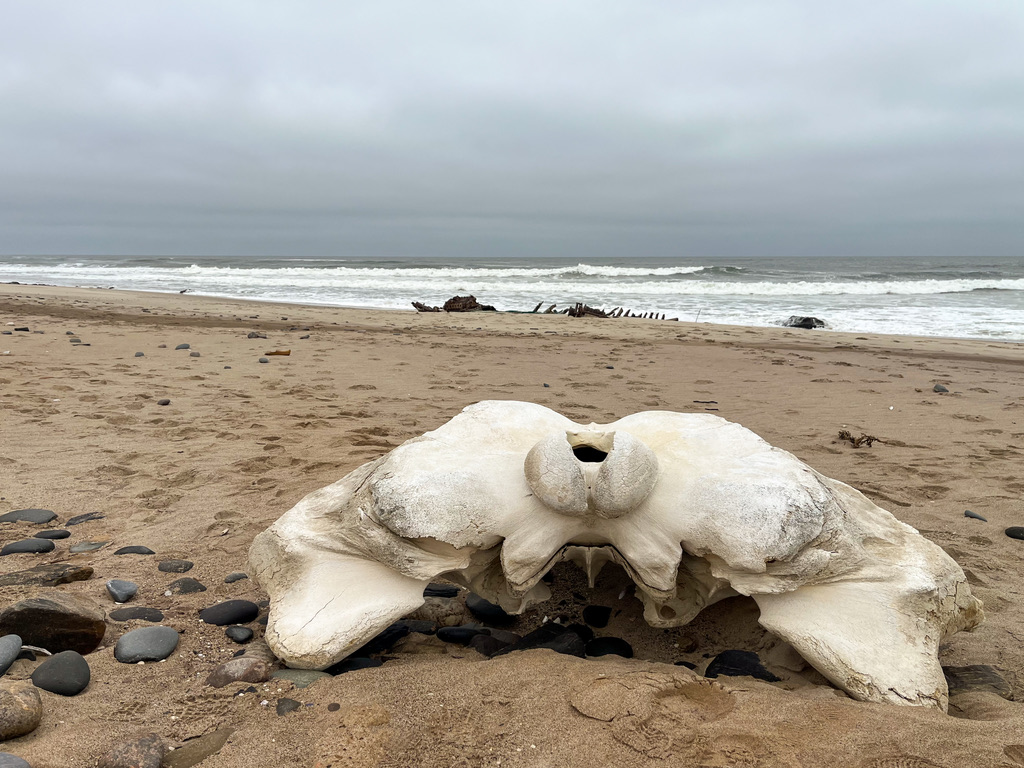
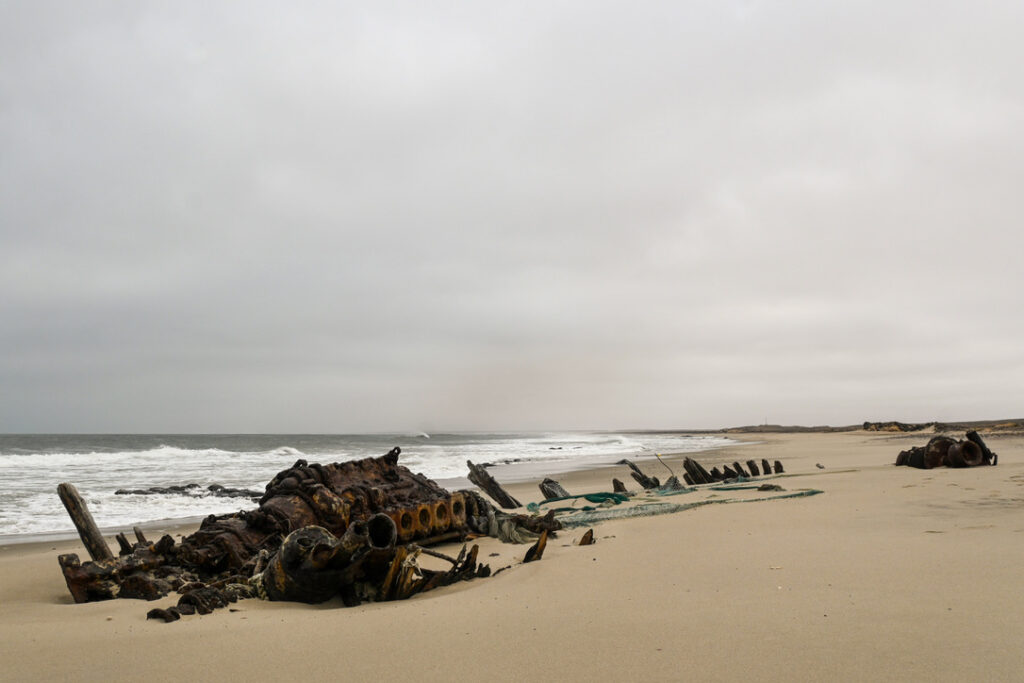
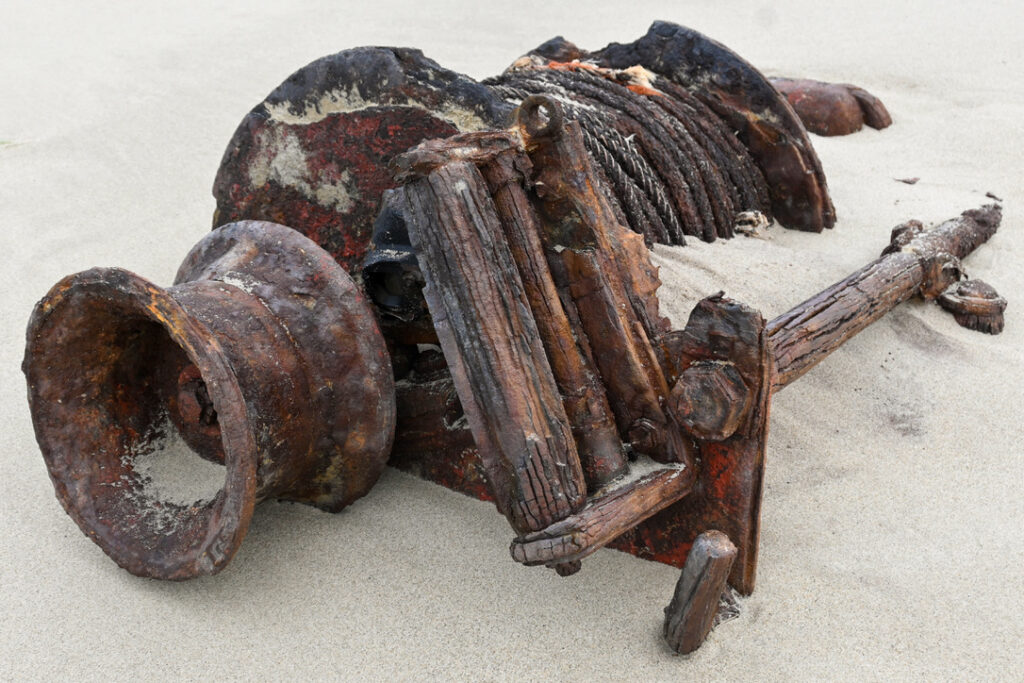


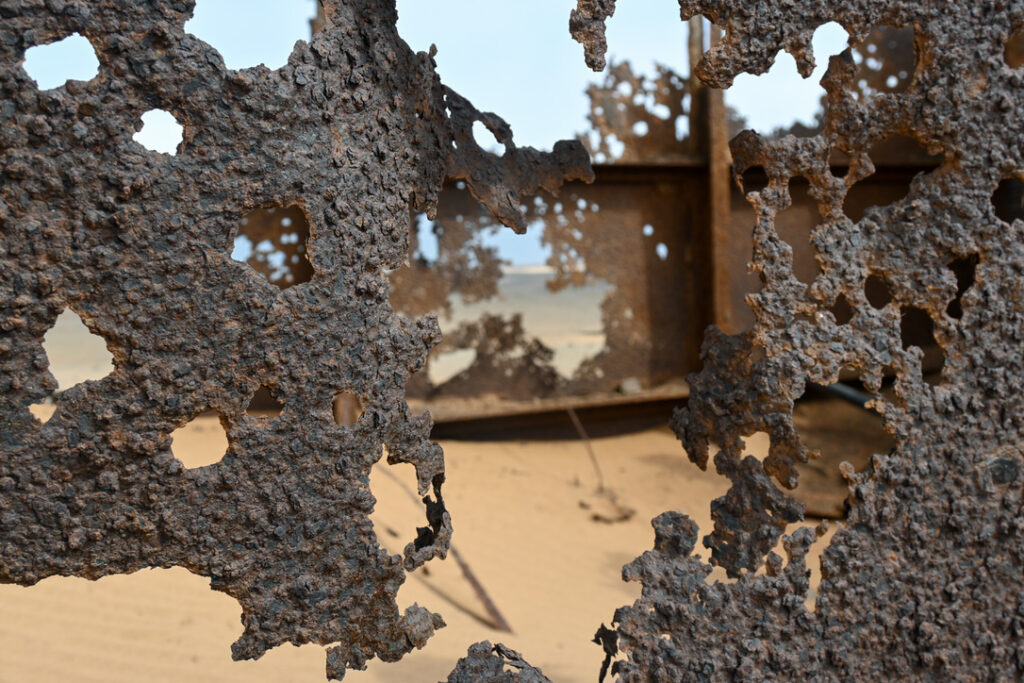
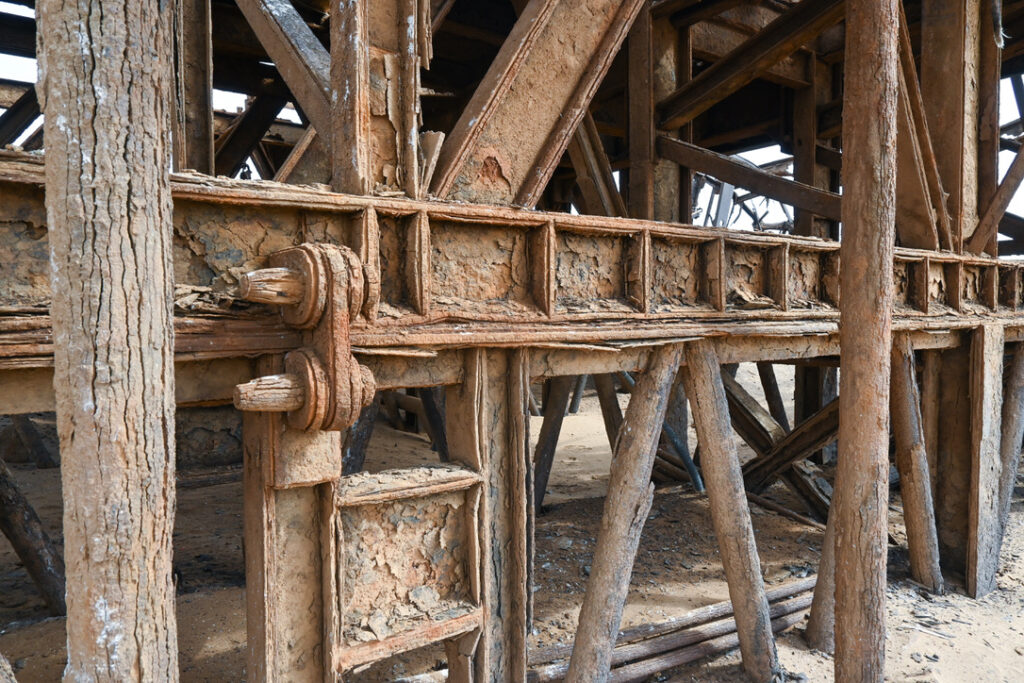
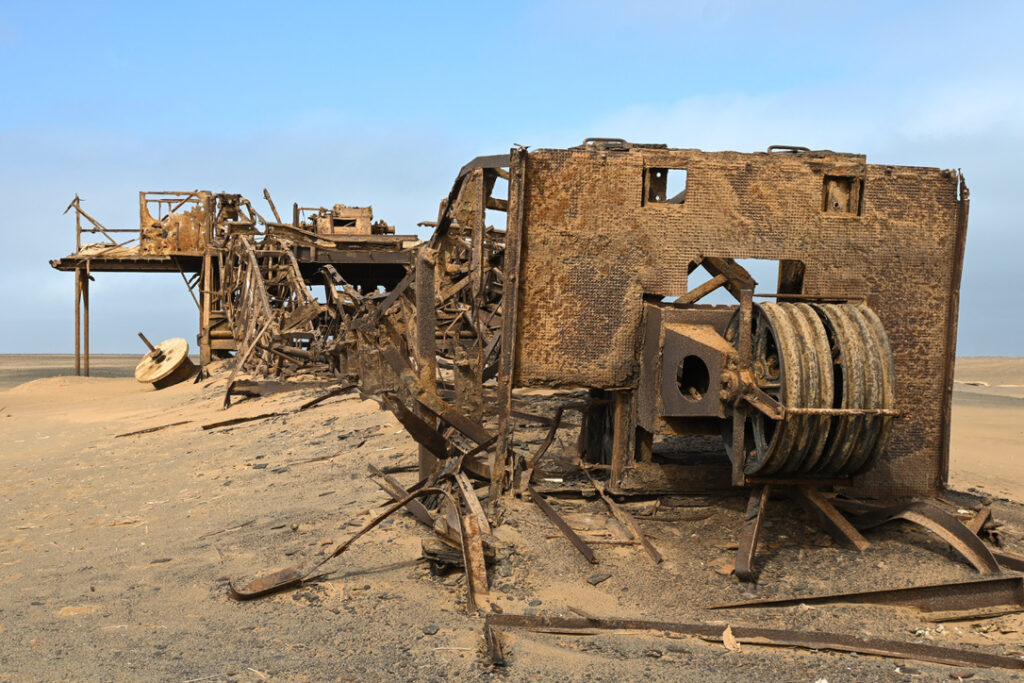
As we headed inland, the landscape changed dramatically from sandy plains to rocky hills, but we remained in the Namib Desert. We had read about the Welwitschia plant, a highly specialised plant endemic to the Namib Desert and one of the world’s oldest living plants, but we were yet to see one. If it hadn’t been for the Lonely Planet’s description of it looking like a tattered, wilted lettuce, we might have driven right by this ‘living fossil’
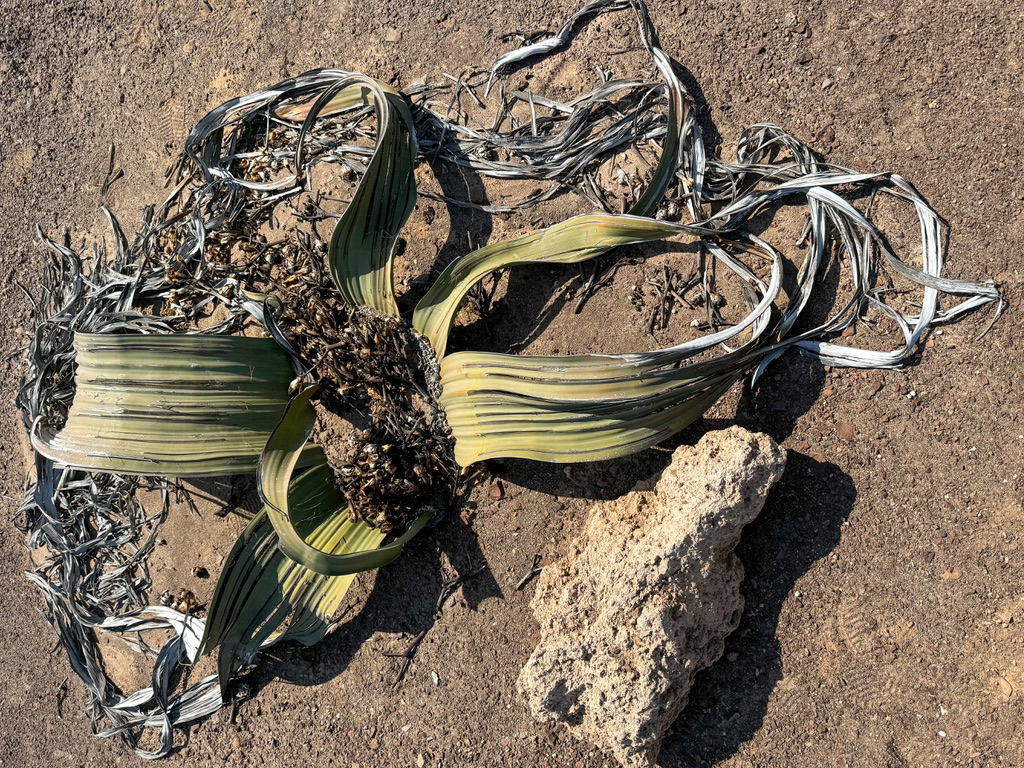
Our gemstone-loving kids could hardly believe that our wild campsite was littered with beautiful rock formations, crystals and geodes. They used every bit of daylight before sunset and more hours in the morning to hunt for their favourites!
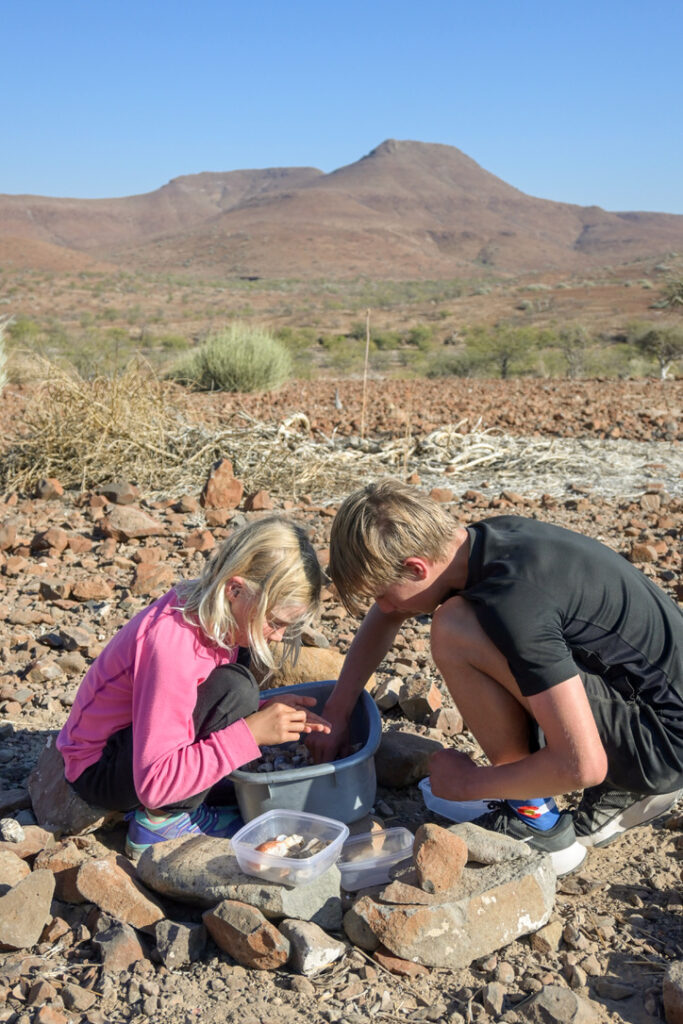

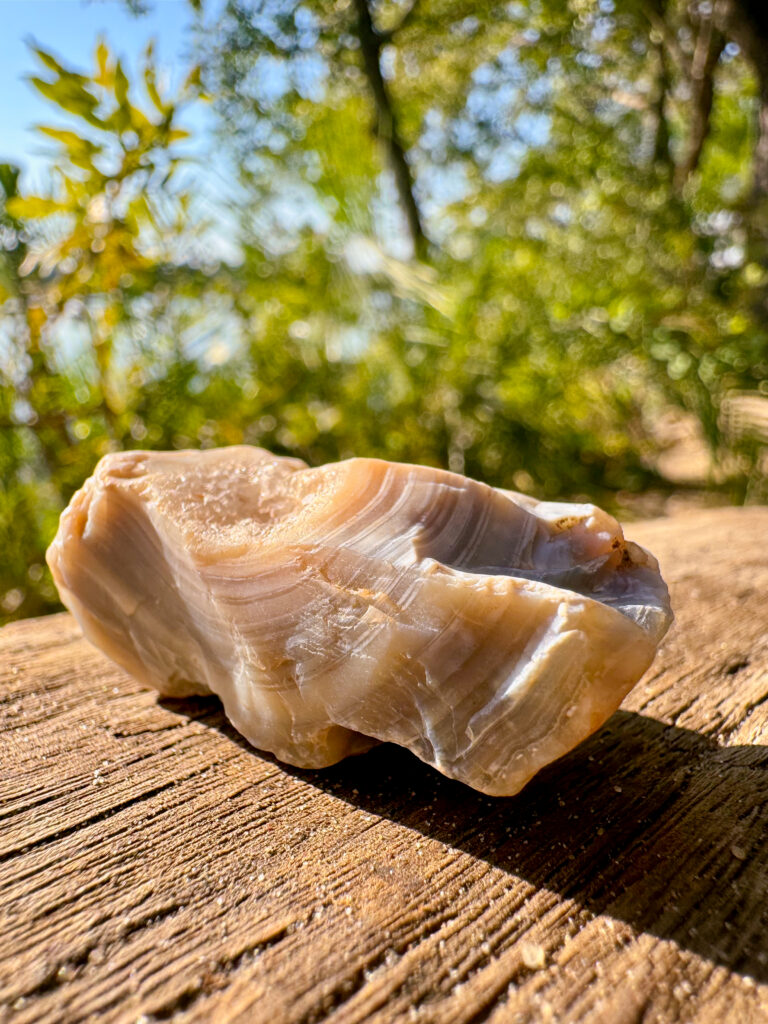
We decided to take the advice from the Lonely Planet book and detour to a place called Elephant Song camp. The road network in Namibia is considered one of the best in Africa (one of the reasons we chose Namibia as one of our destinations in Africa). Many roads are tar, many more are gravel (in a variety of conditions), and then the rest of the country can only be accessed by 4WD. The final 20 kilometres to reach Elephant Song was a very sandy, very dusty, very bumpy adventure down the dry Hoanib River, with our tyre pressure lowered to help drive through the deep sand! But boy was the adventure worth it! Elephant Song was absolutely stunning!

We enjoyed sharing stories with the two other people in the camp – it was just us, them and the camp manager for miles and miles and miles!
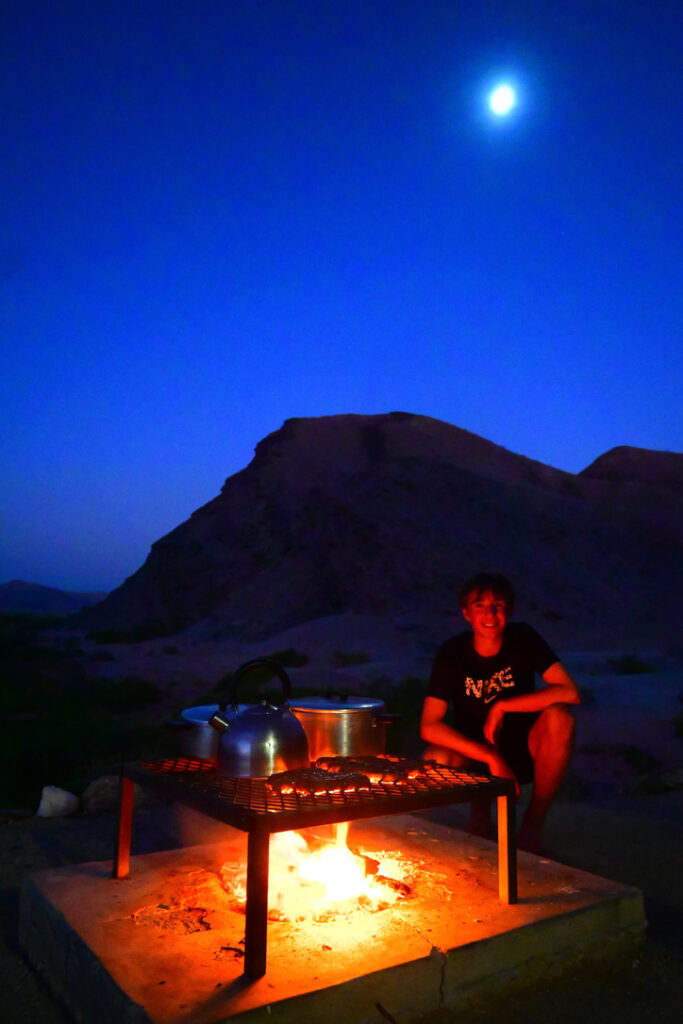
The Hoanib River is home to a subpopulation of desert elephants. These elephants are not a distinct species, but they have specially adapted to life in the desert and are extremely rare – with only about 150 left in all of Namibia. The next morning, with the camp manager Magnes as our guide, we set off further down the Hoanib River in search of the elephants. There was evidence, both fresh and older, that the elephants were wandering in the riverbed – HUGE elephant footprints and HUGE piles of elephant poo!
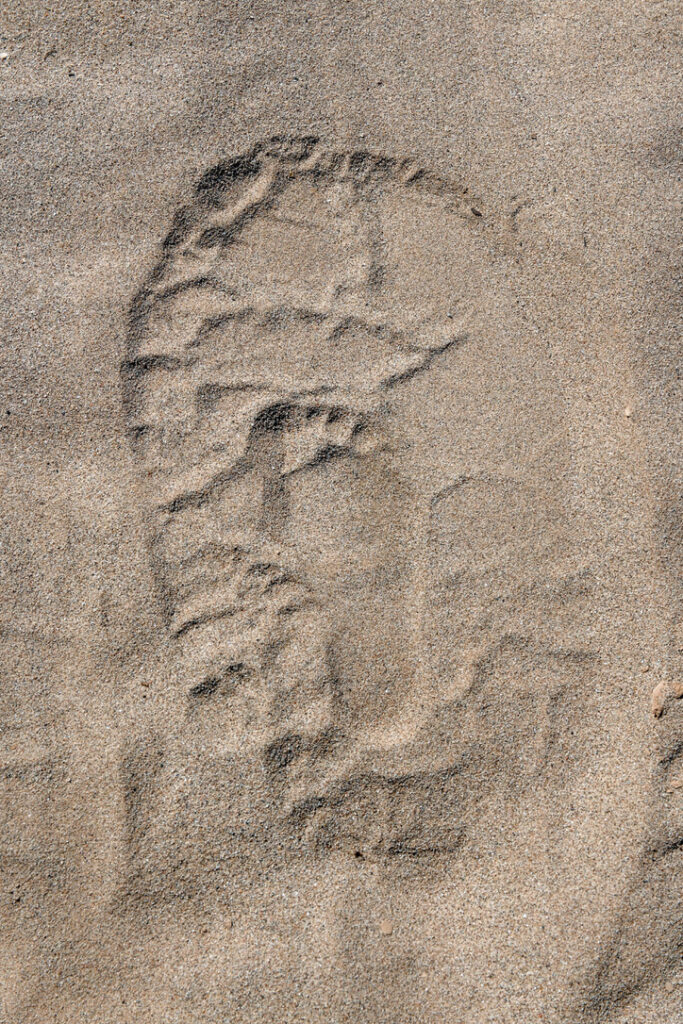
It seemed the fresh evidence had come to an end but then we drove around a bend in the riverbed and suddenly there was a Mama and a baby elephant chomping their way through the vegetation! Soon there were more and more elephants – babies, young ones, smaller bulls and giant mamas! Wow! What an experience! Amazing! It was hard to leave the beauty of the Hoanib River – we were so grateful for both the experience and for the obvious conservation efforts taken in the area to protect the desert elephants.
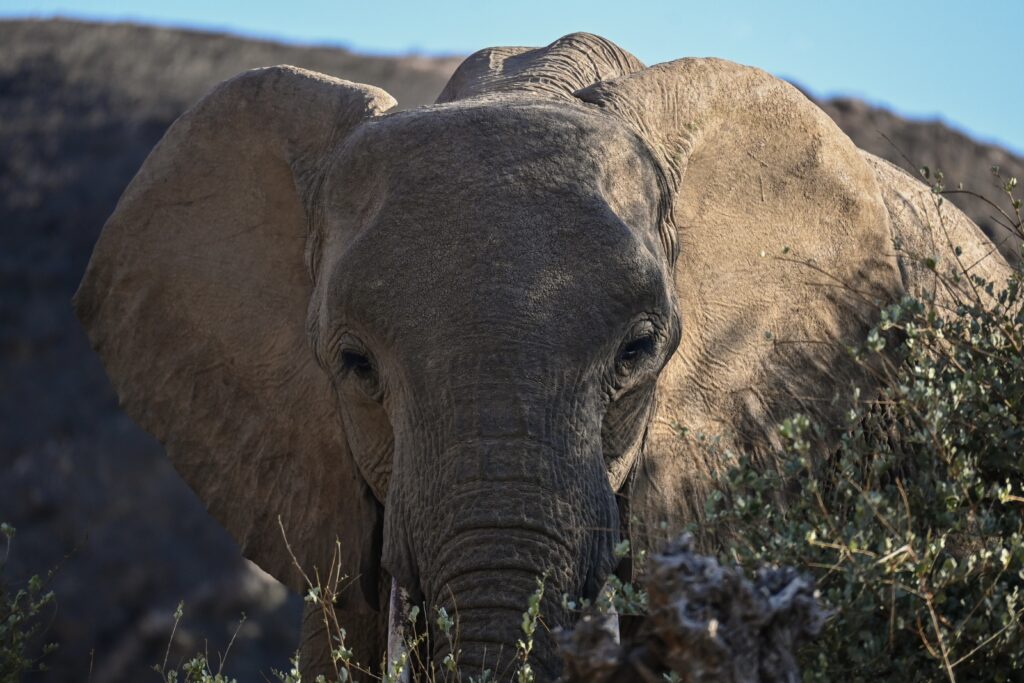
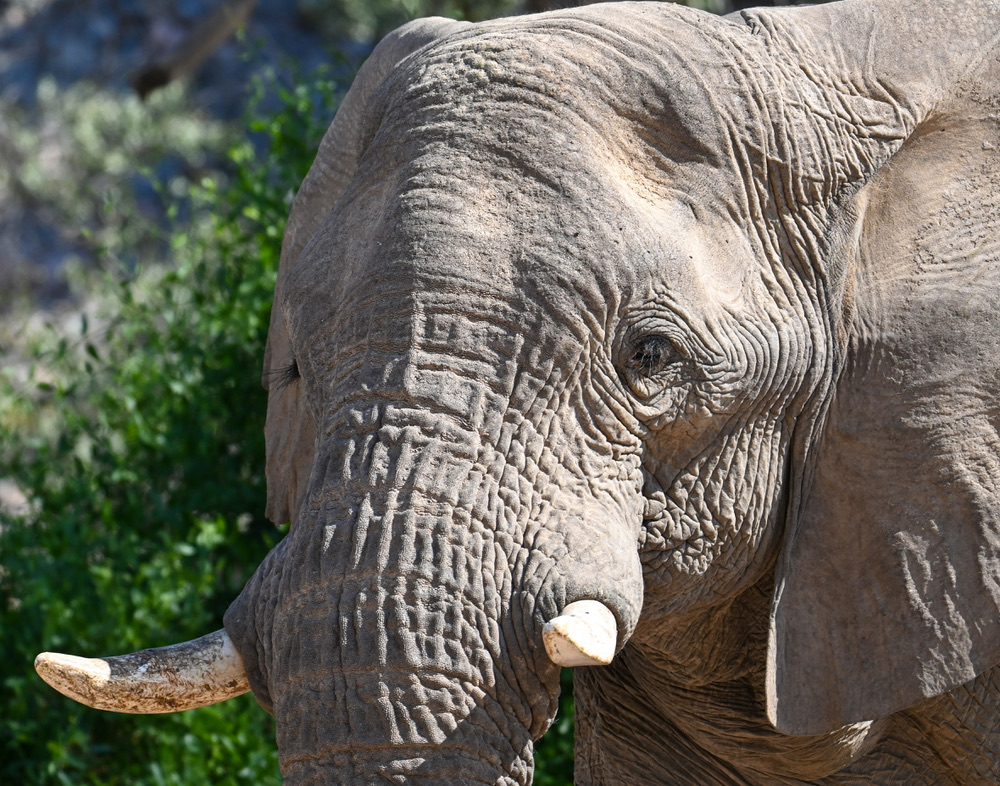
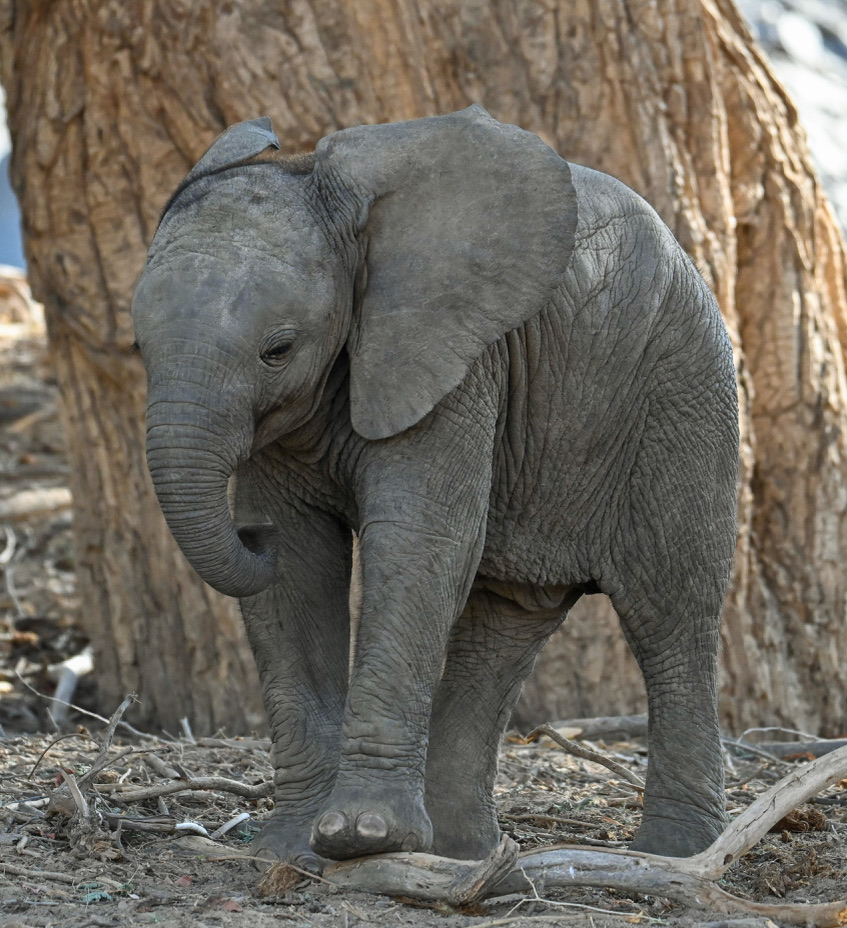
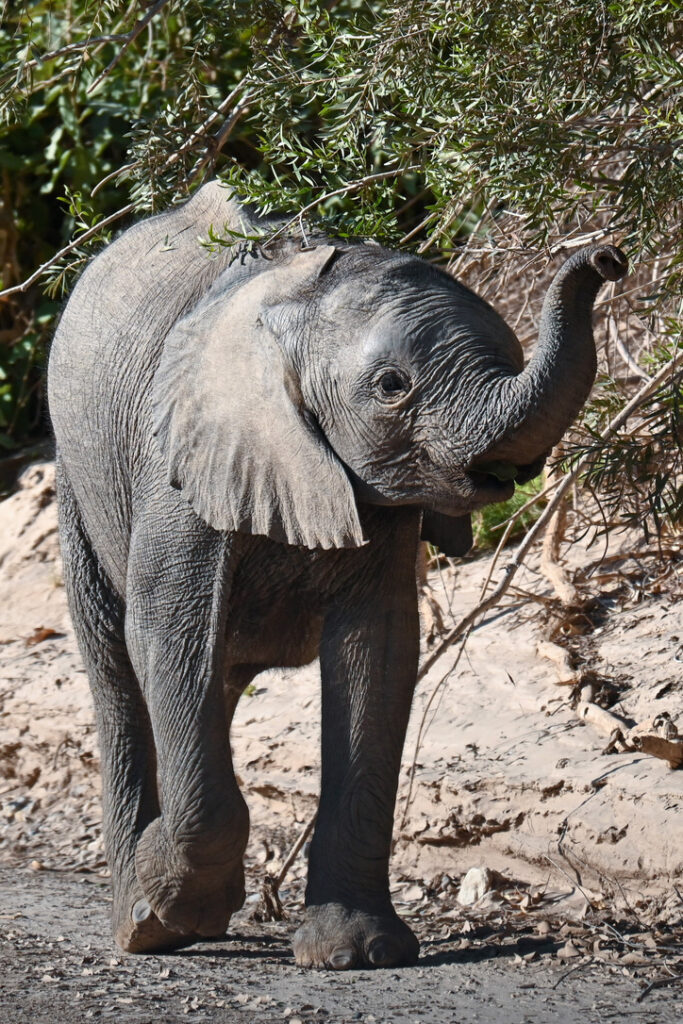

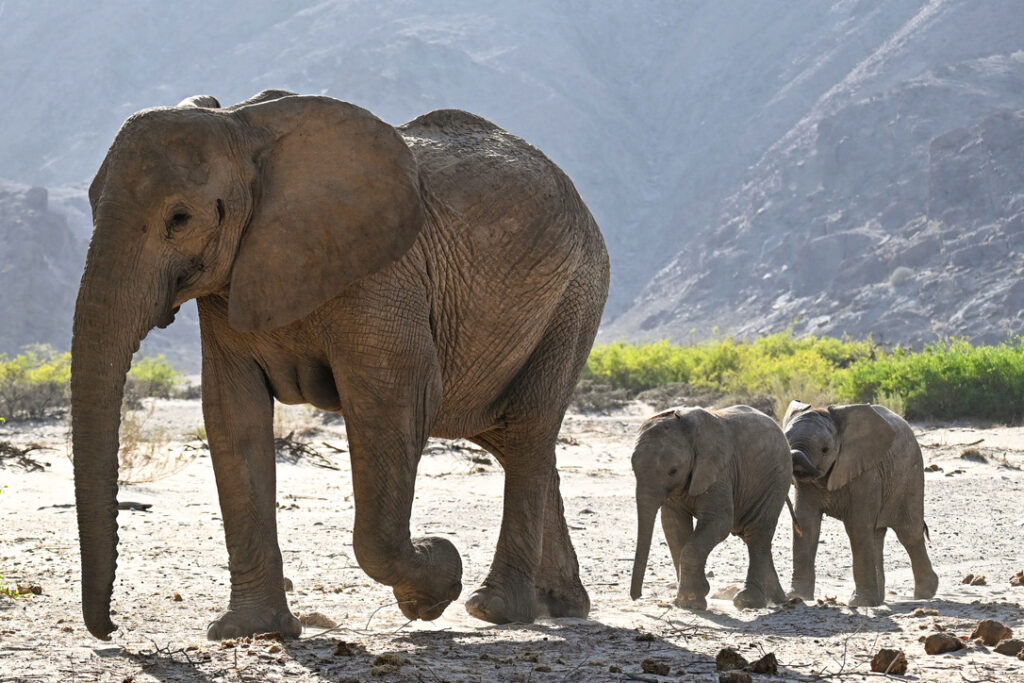
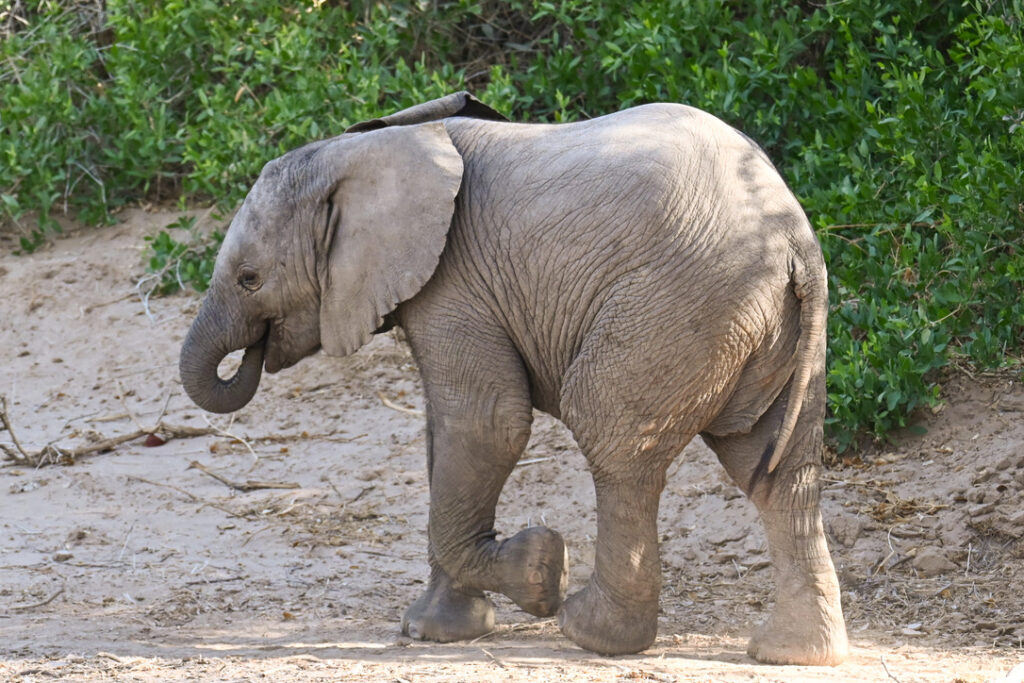
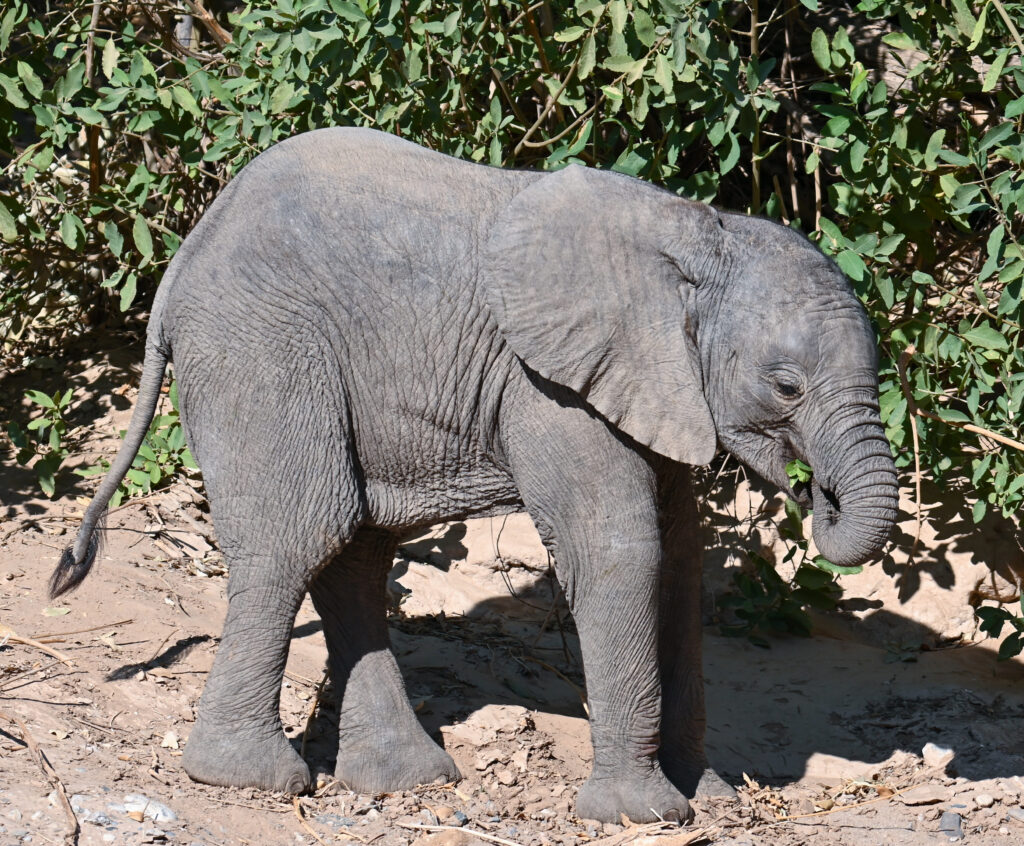
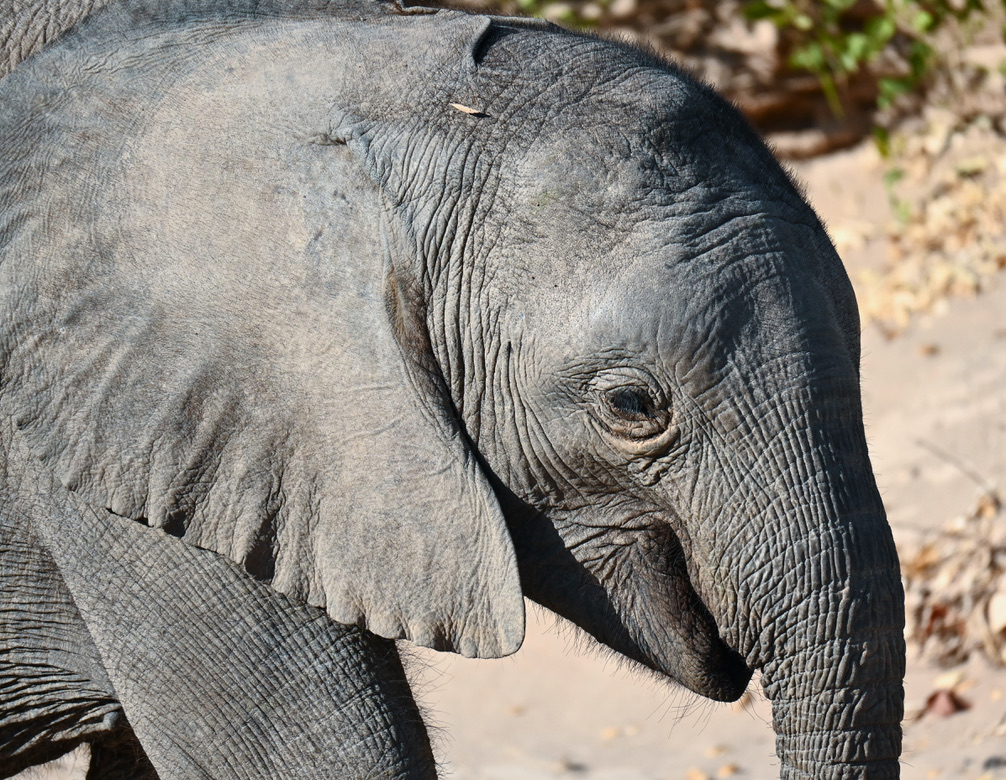
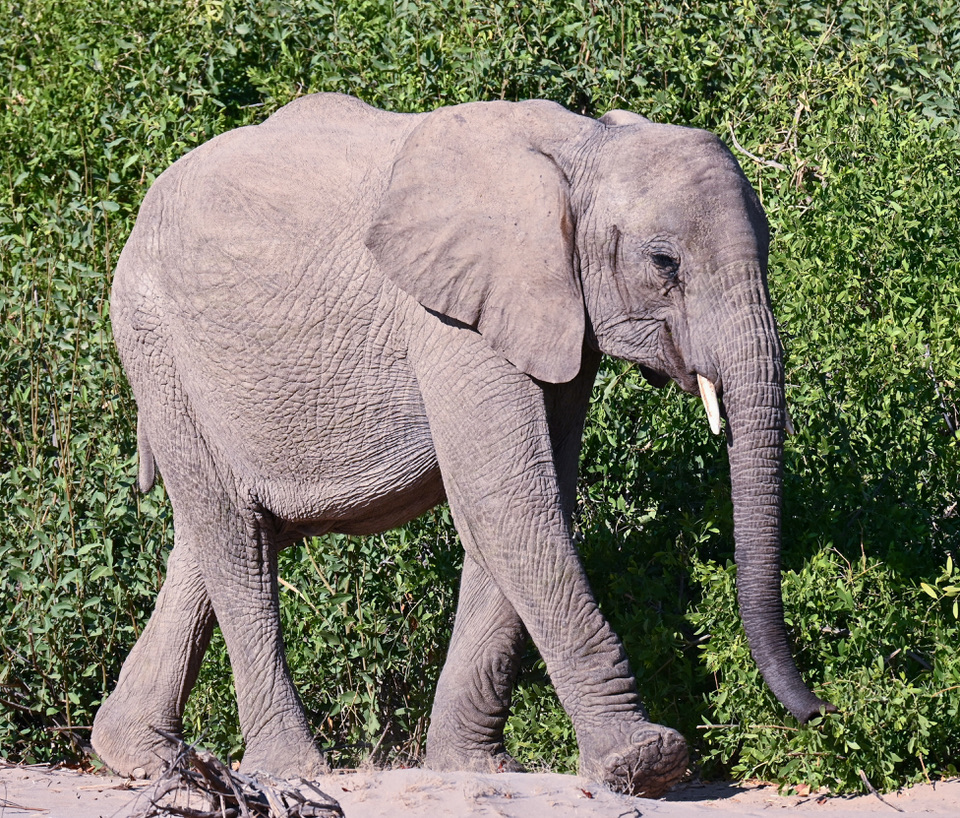
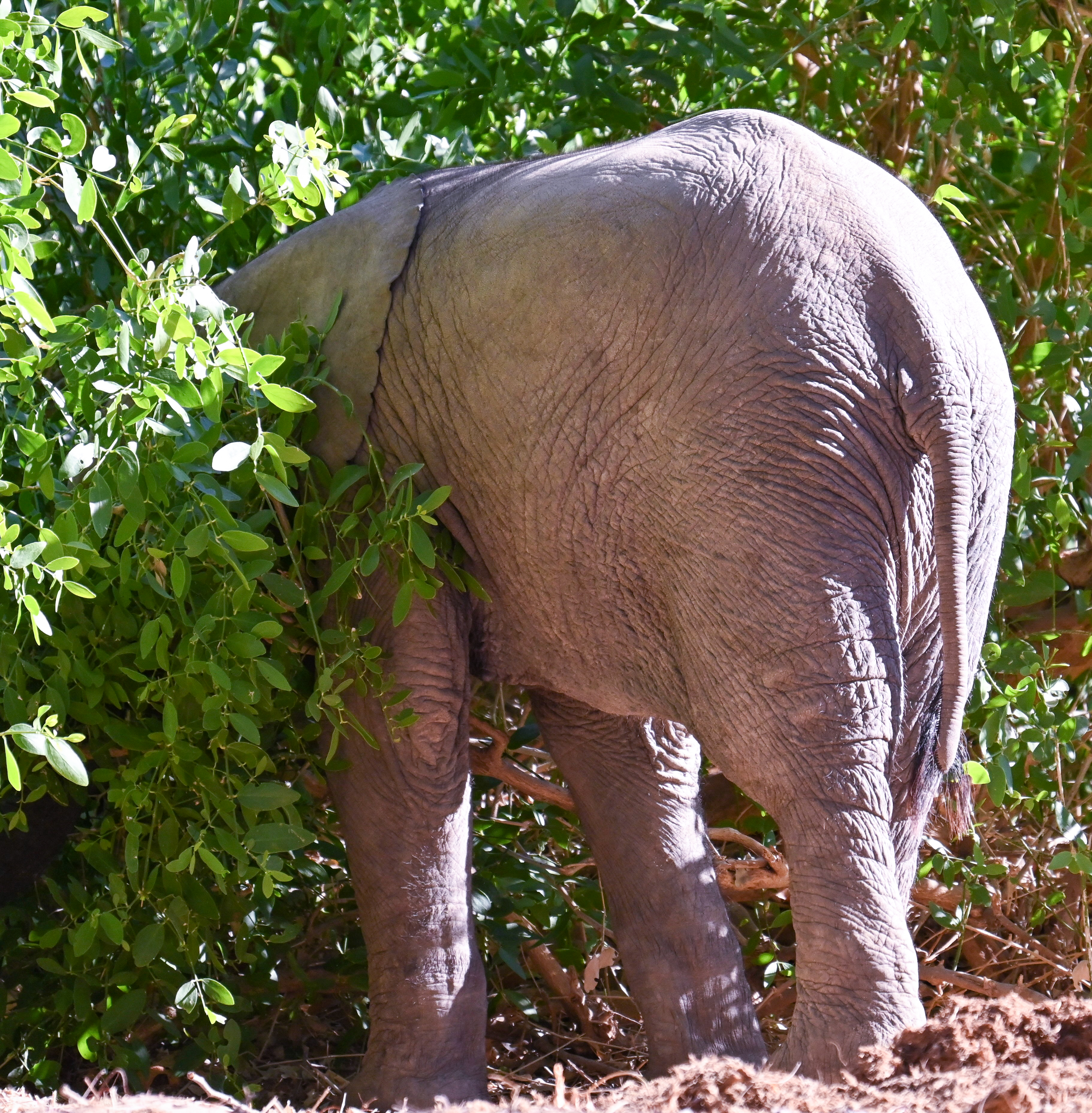
Our most northern destination in western Namibia was Opuwo, a chance to interact with the Himba – the last semi-nomadic people in Namibia. Magnes had given us the contact details of his friend and guide Tjingi. Tjingi grew up in a Himba village and had a fascinating story as to how he had left his family as an 11 year old to attend school. As his parents were unsupportive of his wish to be formally educated, he had had a difficult time but was glad that he and his 2 daughters can now live the ‘city life’ (Opuwo has a population of less than 30000 people). Tjingi took us 50 kilometres north to an isolated Himba village. The villagers didn’t know we were coming but they welcomed us into their home. Tjingi explained some of the Himba customs and translated between us. Unfortunately most of the older kids were out with the animals but we loved the chance to play with the little kids. Zara shared her colouring pencils and rock pens and Lucas took his spare football and had a great time having a kick around with Tjingi and the kids, leaving them the ball when we left. We had also bought a selection of food staples with us for the village to share to show our appreciation of them having us stay for a few hours.
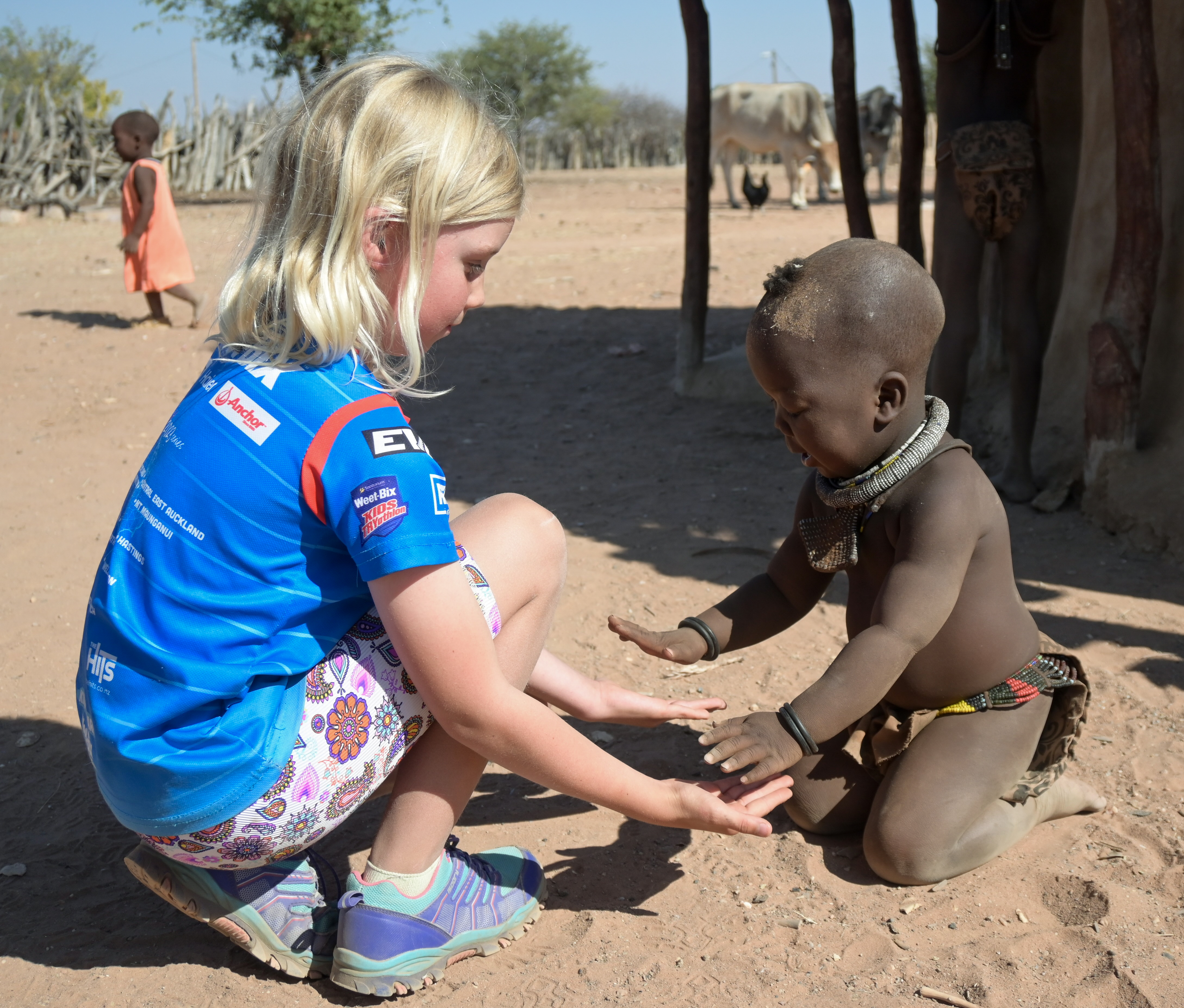
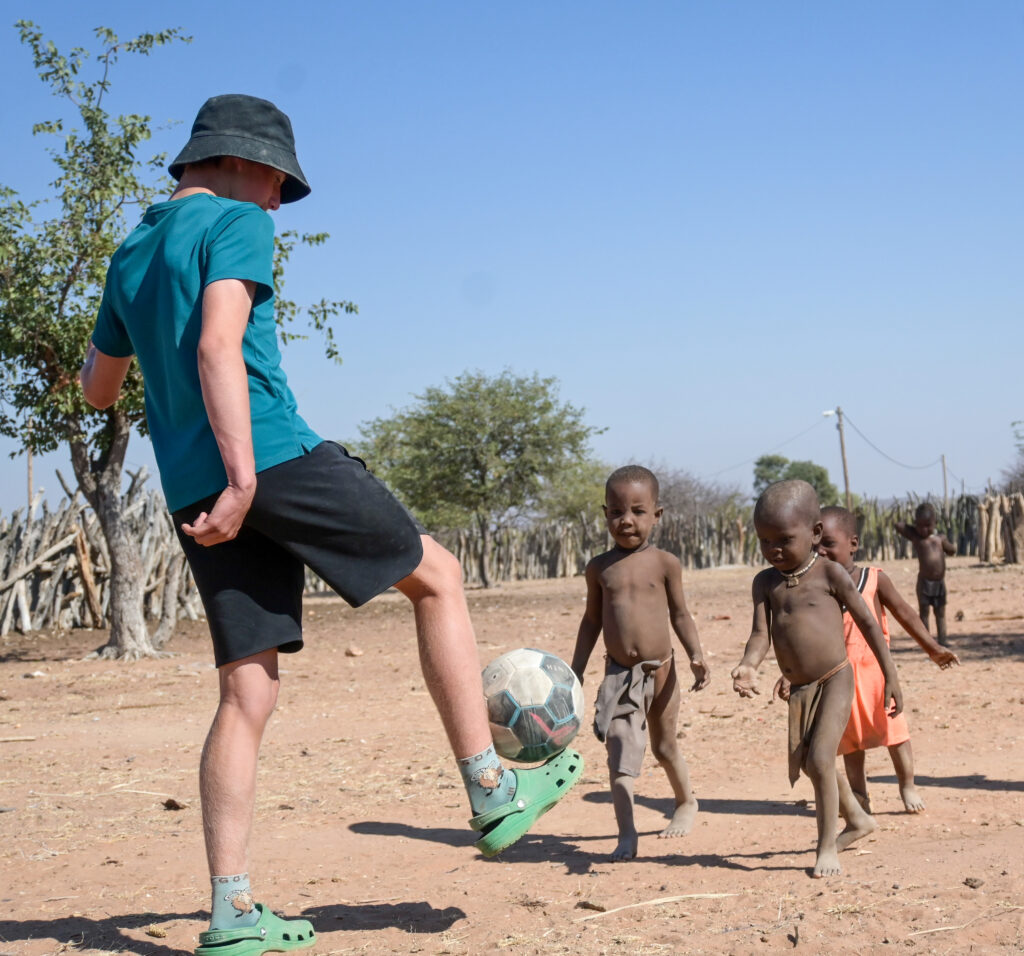
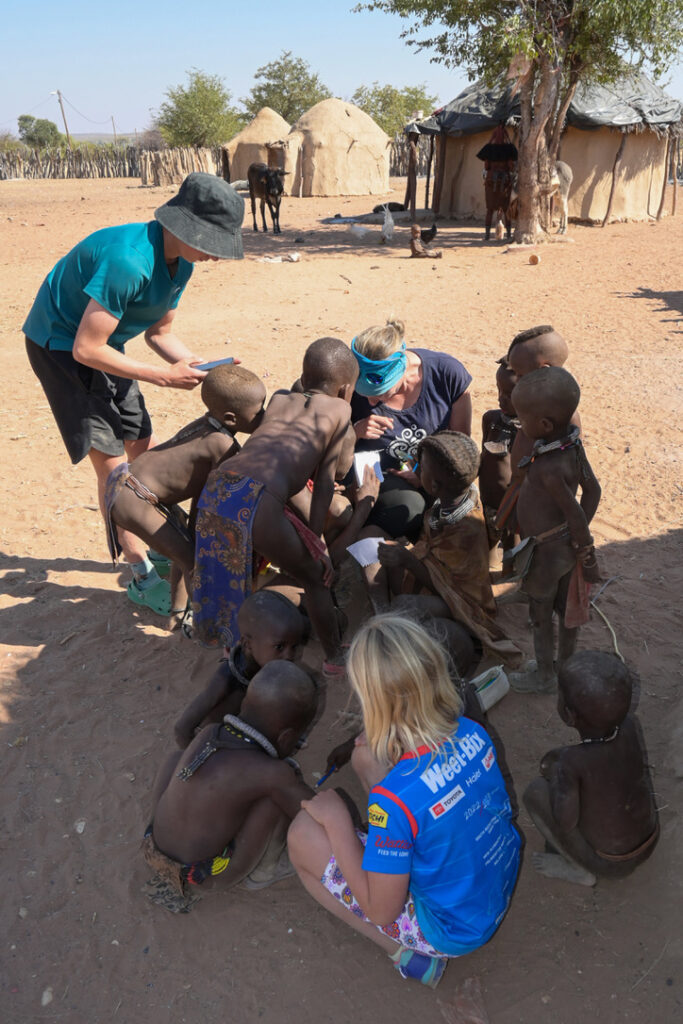


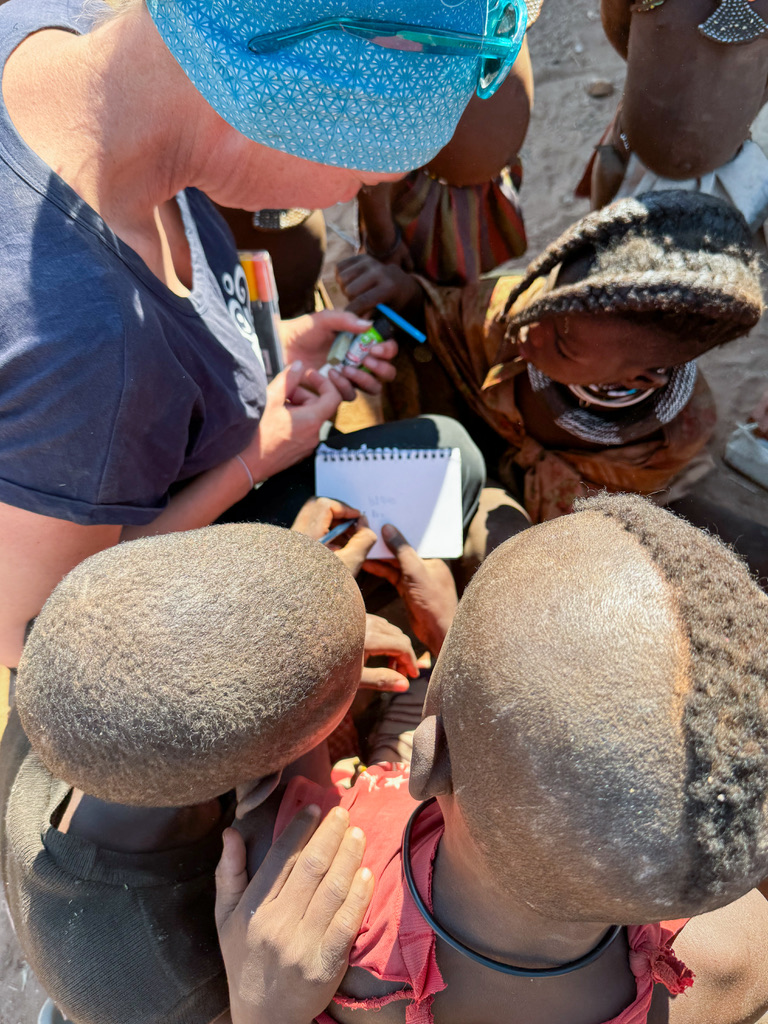

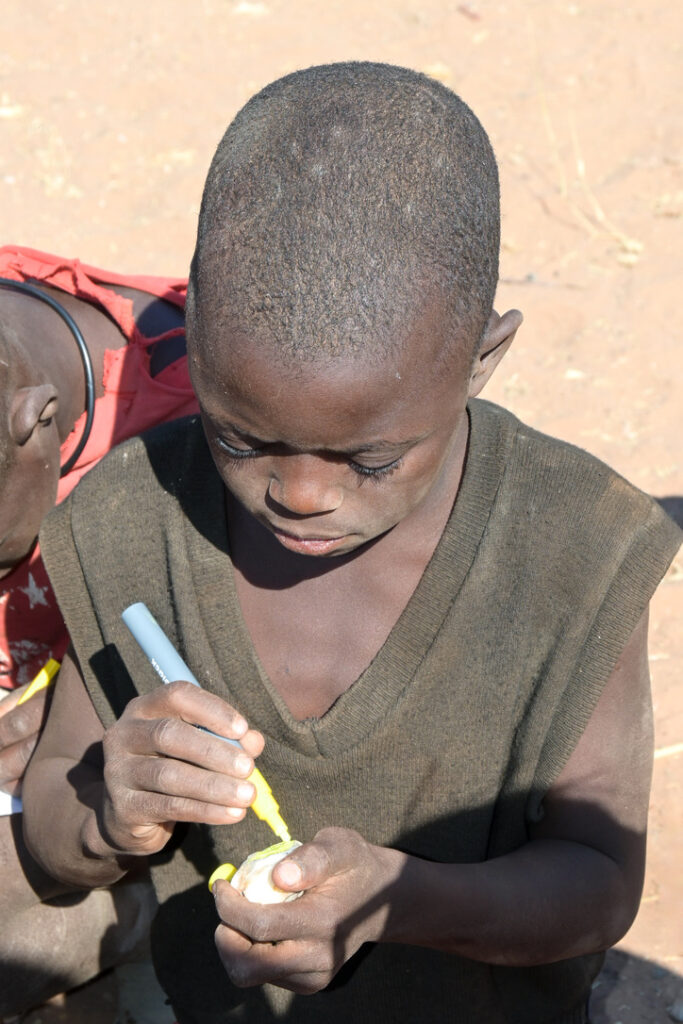

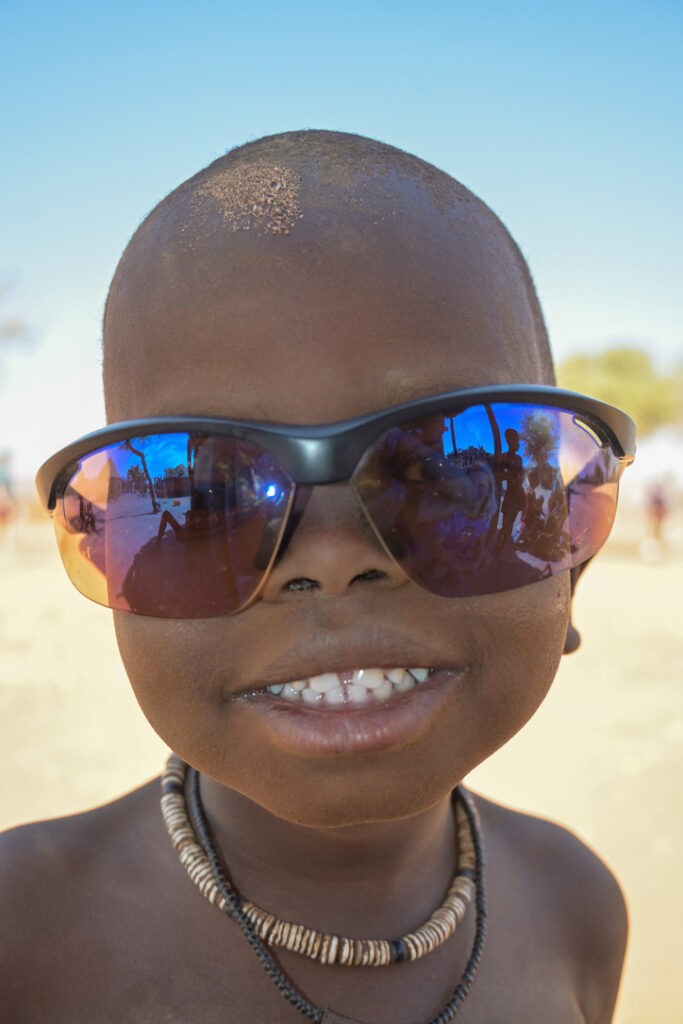
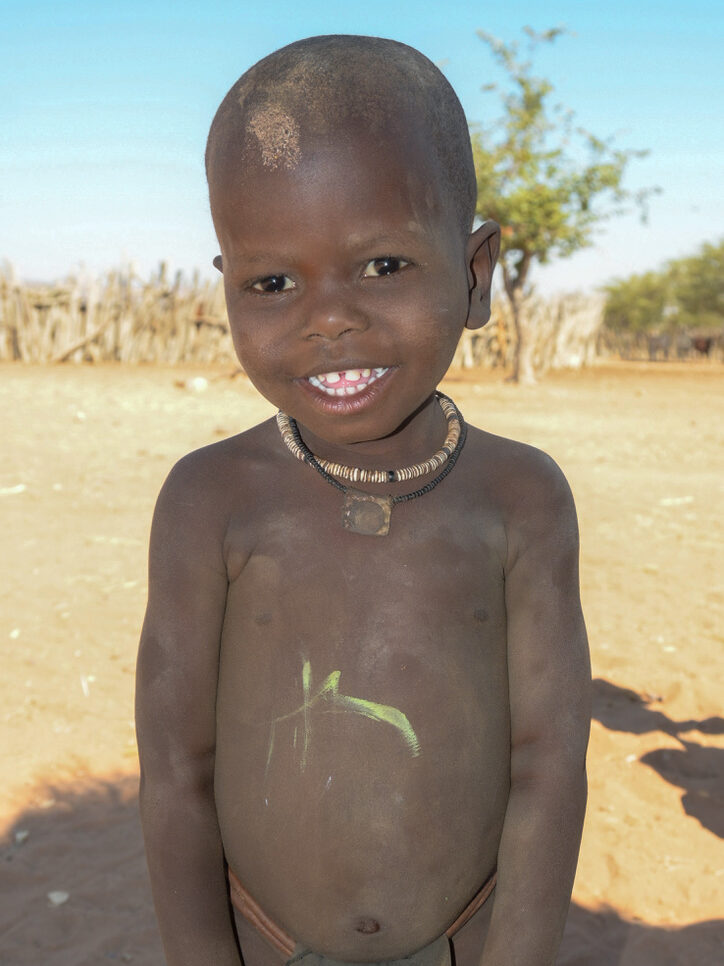
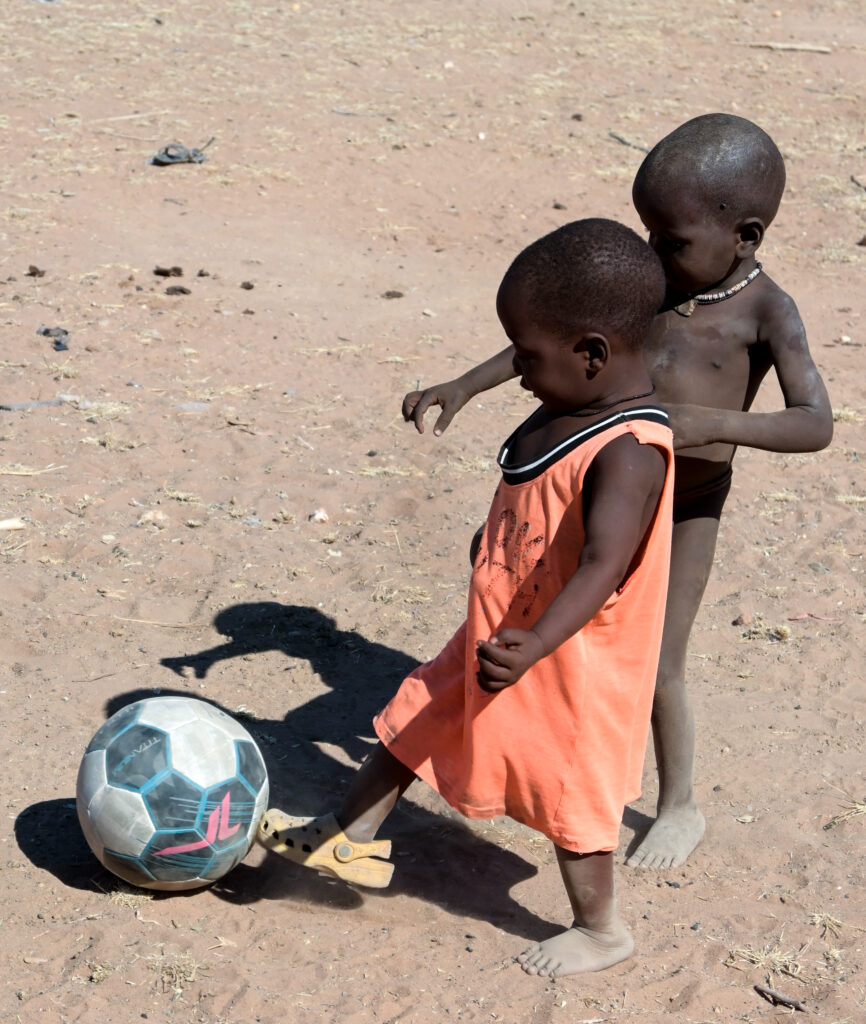

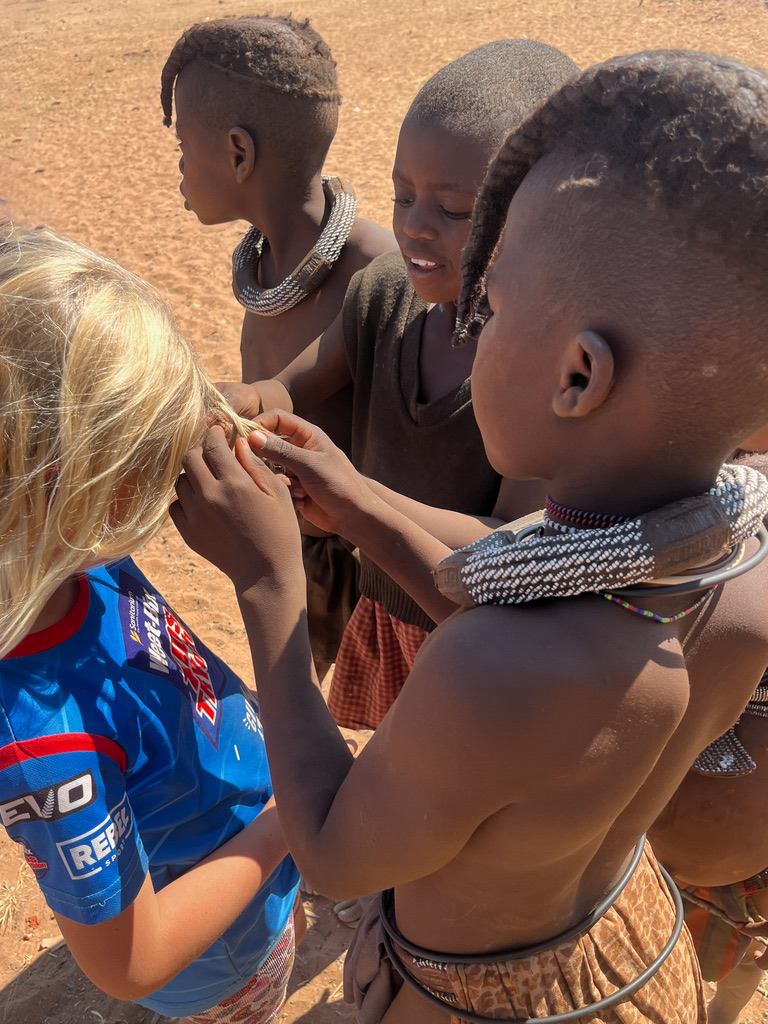

From Opuwo we drove south to Kamanjab in the hope of seeing some porcupines! After lots of wild camping nights, we enjoyed a night in a lovely camp with its own resident population of hornbills, ostriches, rock dassies, and a family of porcupines! The porcupines came out about 8pm and we were all in hysterics! What hilarious-looking animals! We tried so hard to be quiet but every time they reappeared brought a new round of laughing! We loved watching them.
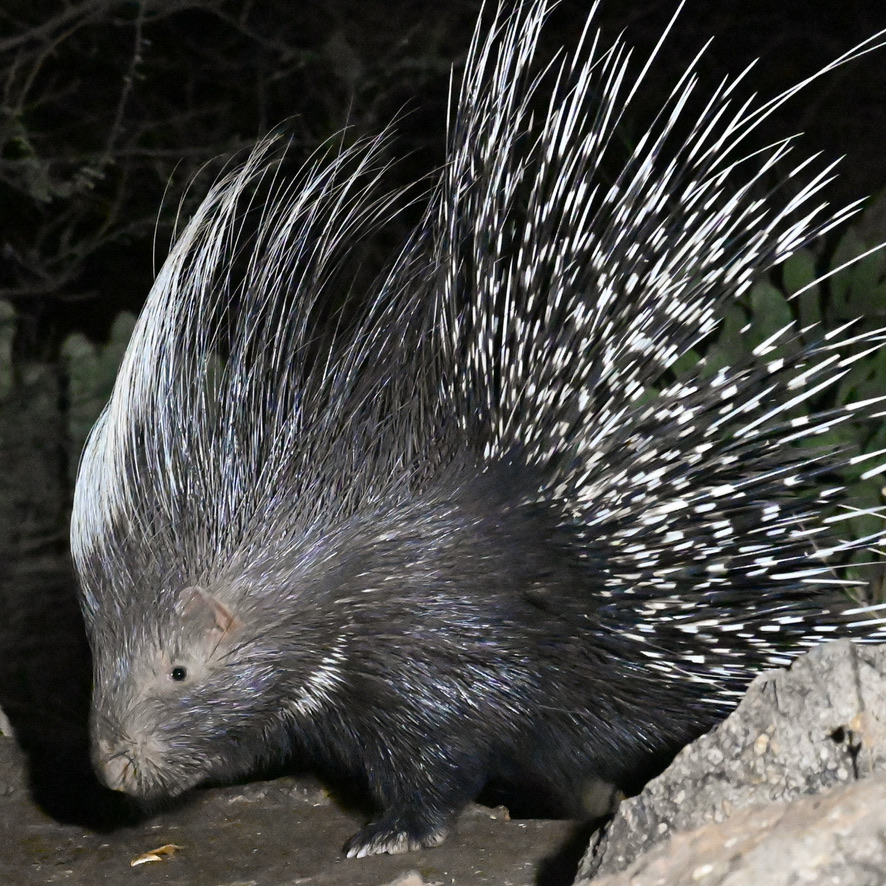
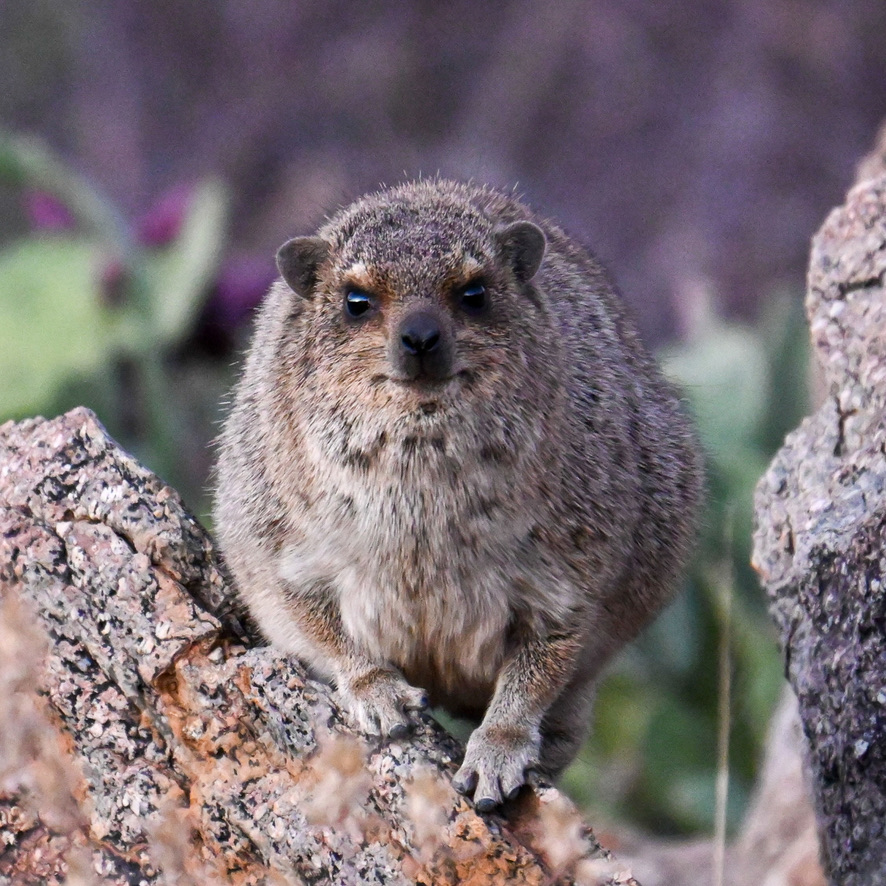
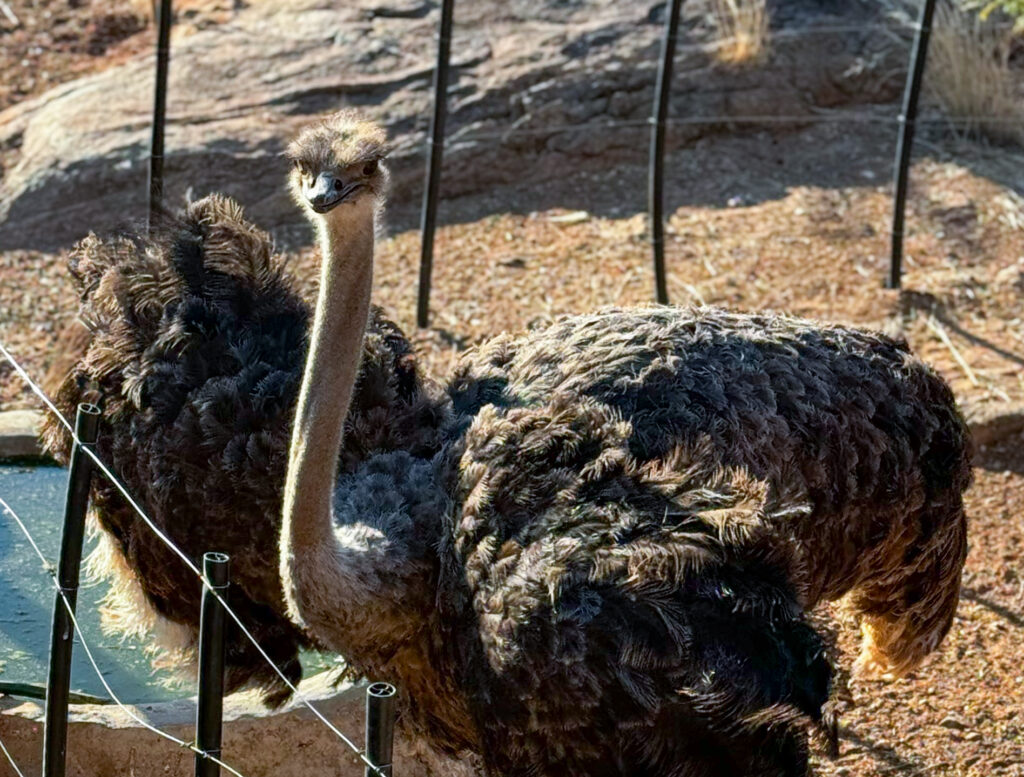
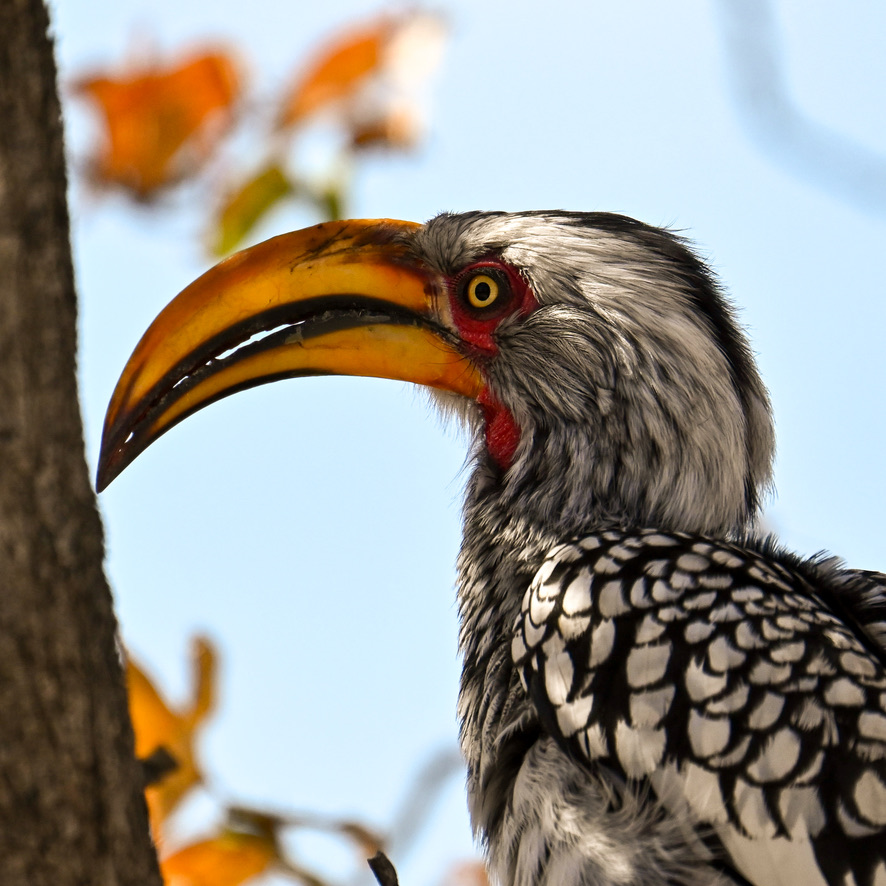
Our next stop, where we spent 6 days, was Etosha National Park, one of Africa’s largest national parks. The timing of our year was built around wanting to be in Africa in June and July for the winter ‘dry season’. The dry season is great for animal-spotting as both the natural waterholes and the boreholes are very active with animals seeking water.
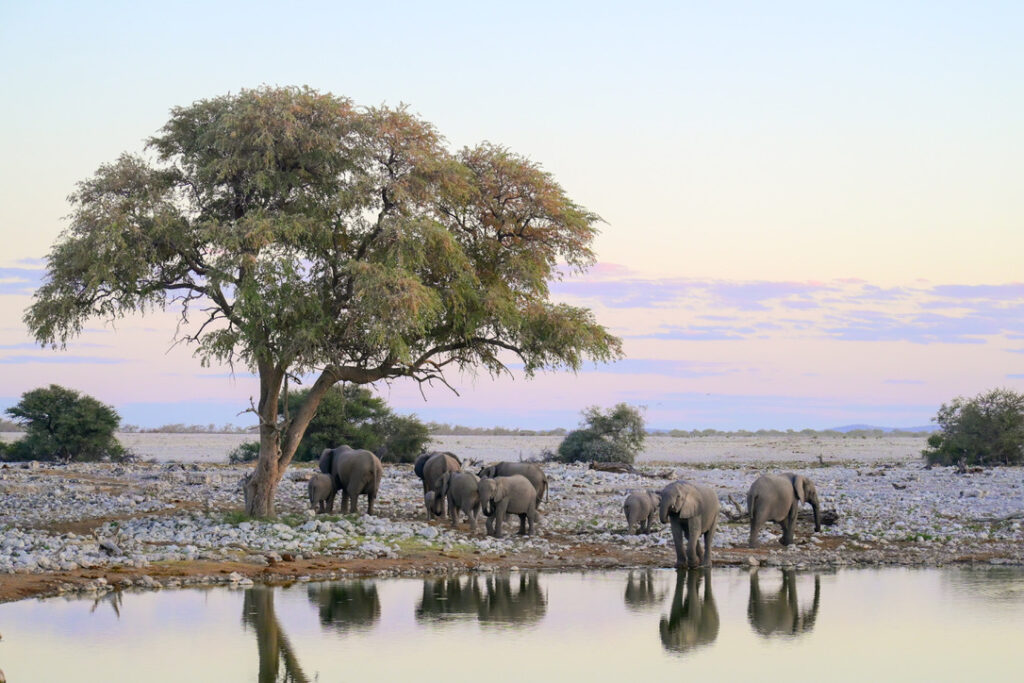
We came into Etosha on the west side and drove all the way east, staying at 3 different campsites that were special in their own way. Etosha was absolutely AMAZING! So many incredible experiences watching such a diverse range of animals. Just beautiful! We have approximately 5 gazillion photos so here are just a few and we will do a seperate post with more for those who are interested.
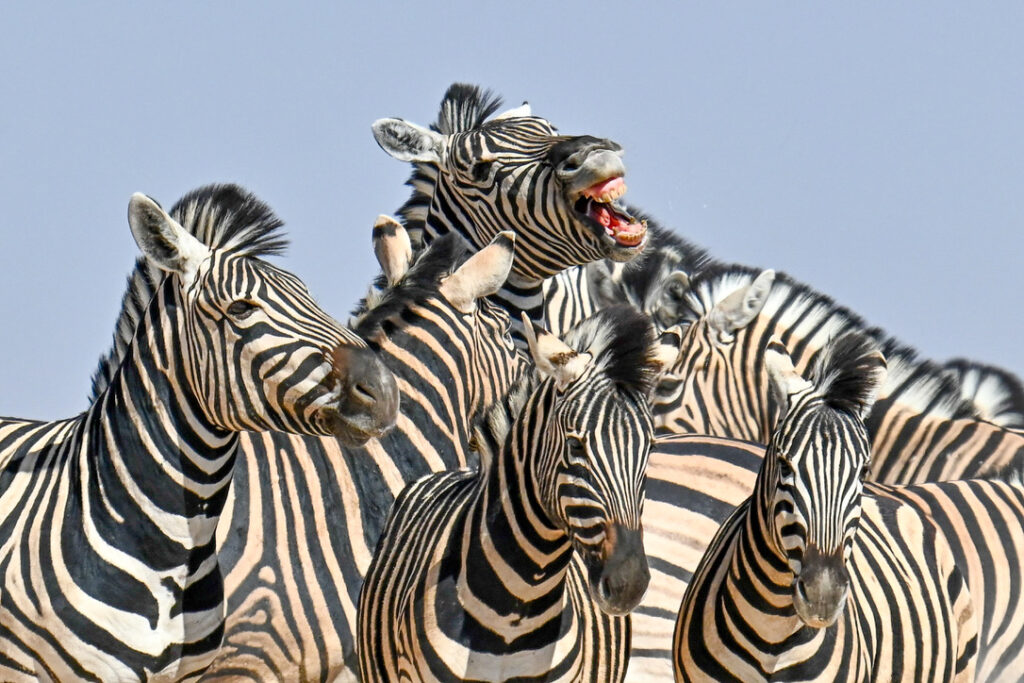
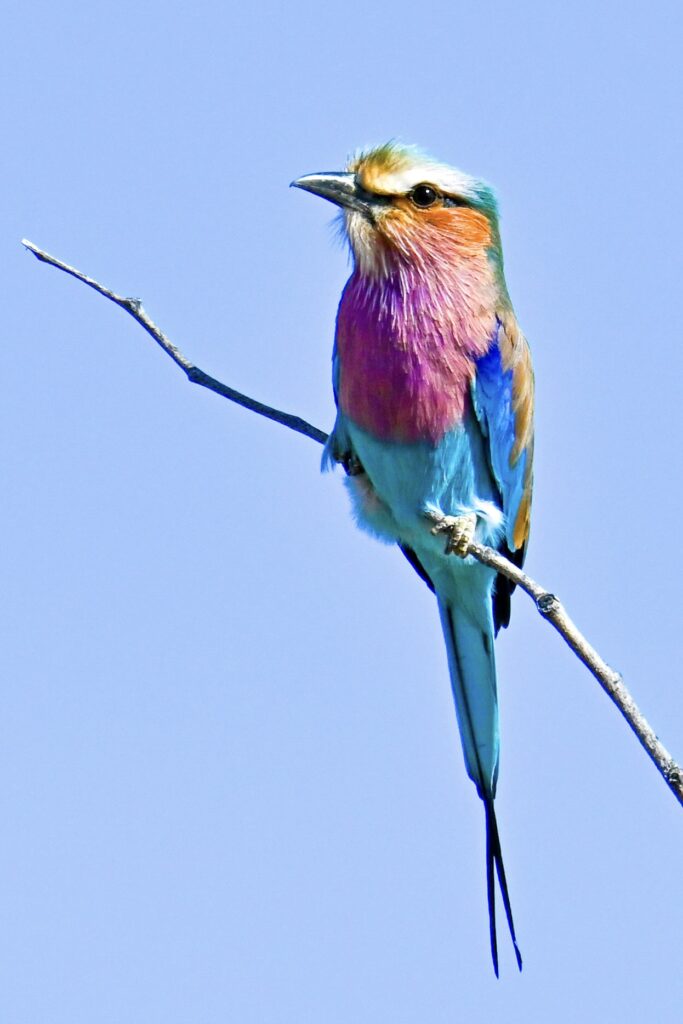
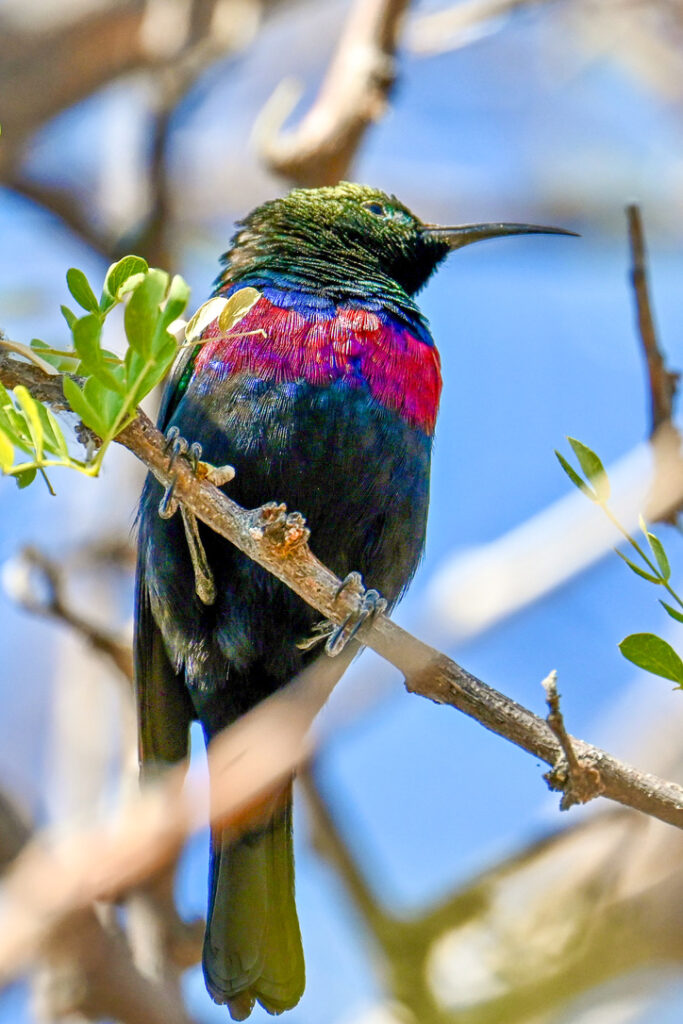
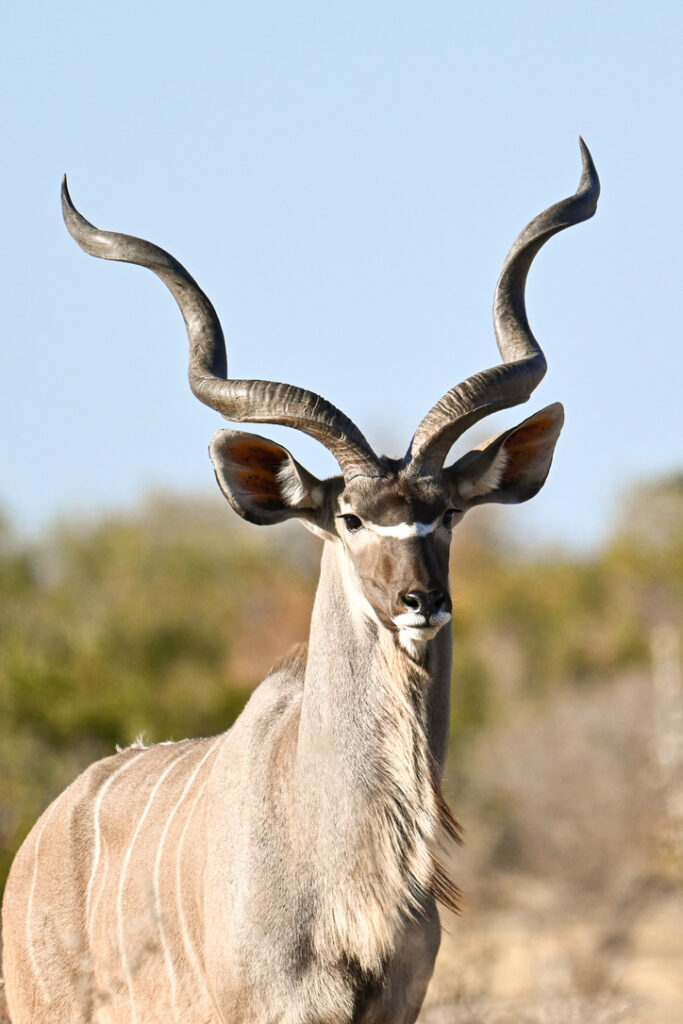
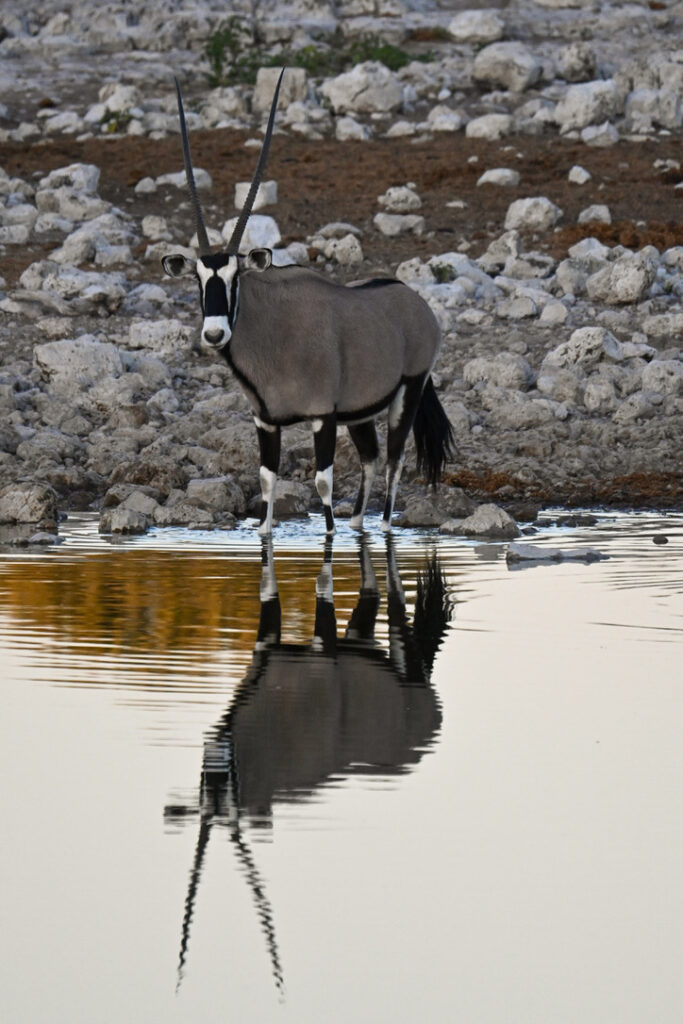
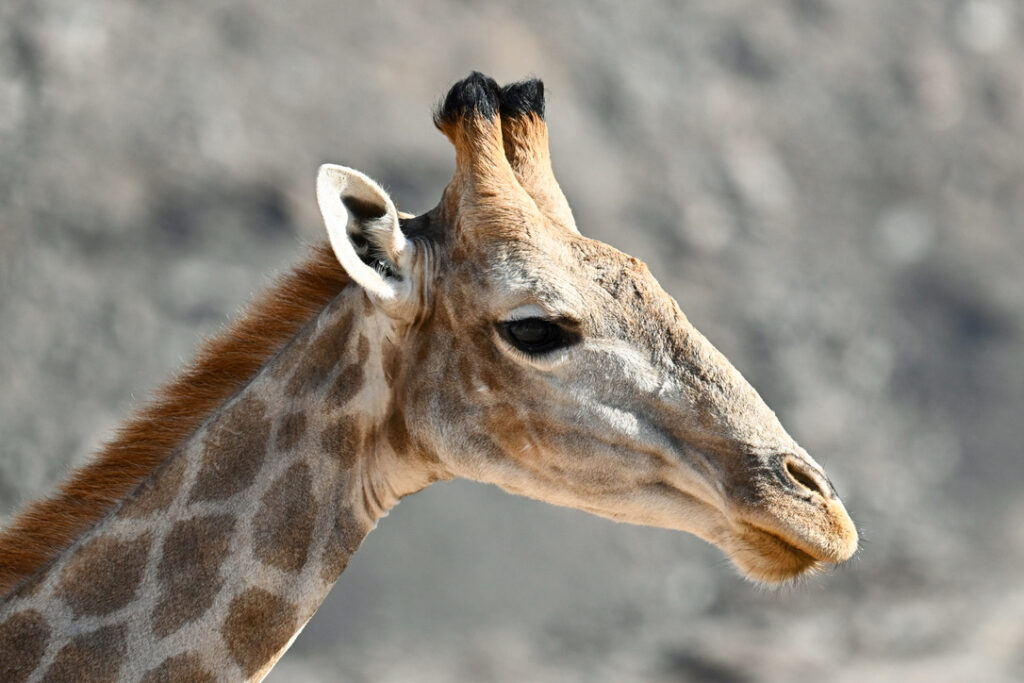
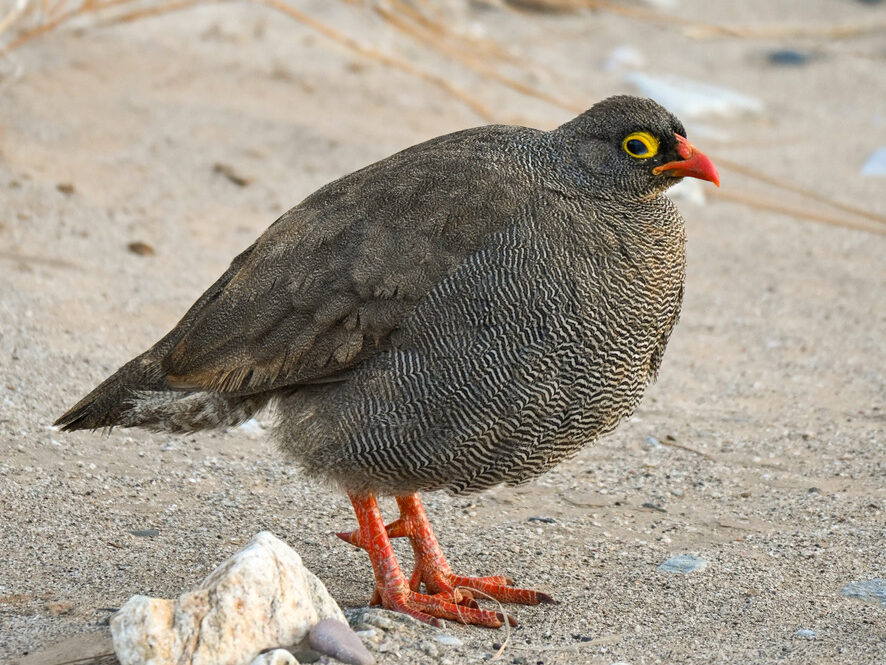
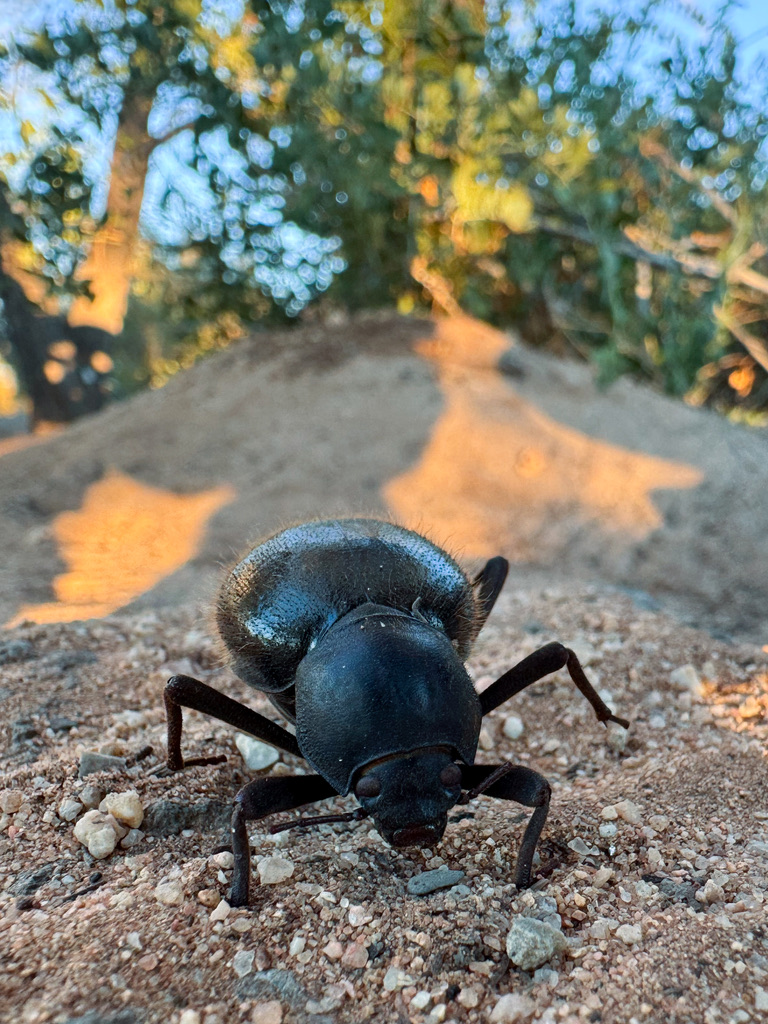
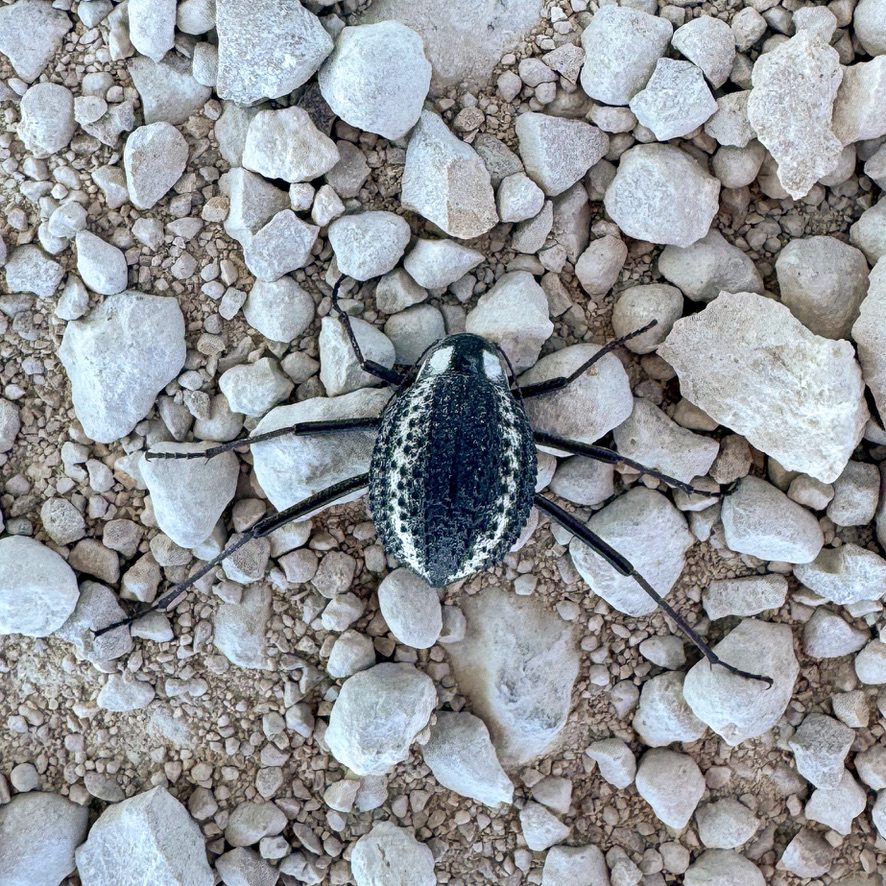
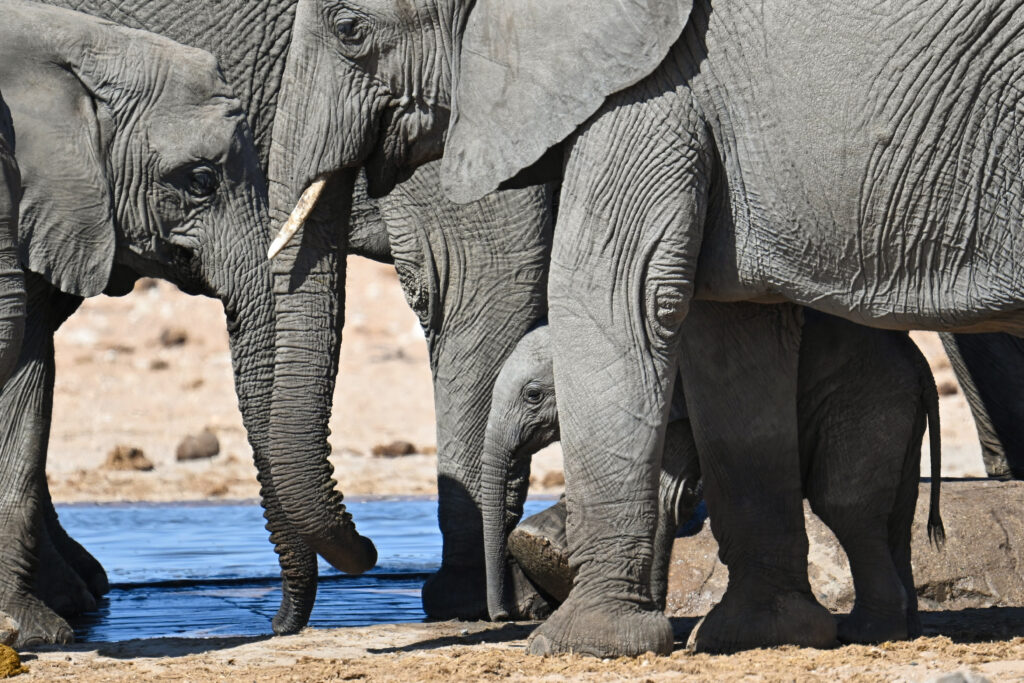
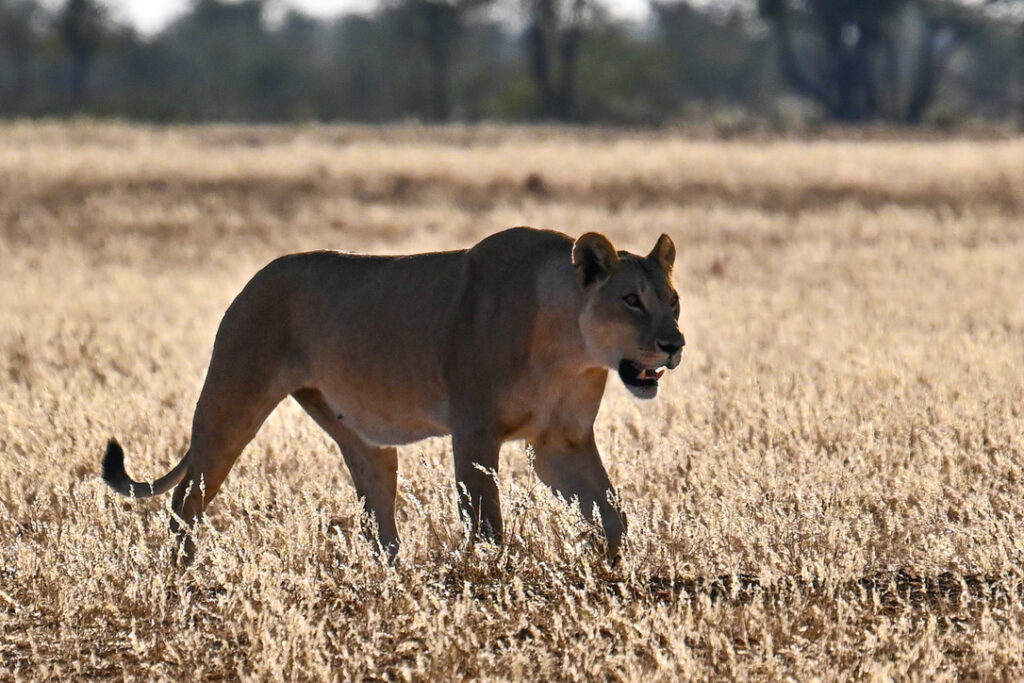
We really enjoyed meeting other travellers in the camps and the kids liked hanging out with other kids. The Olifantsrus camp was particularly fun for making new friends – and the sunrises and sunsets were outstanding.
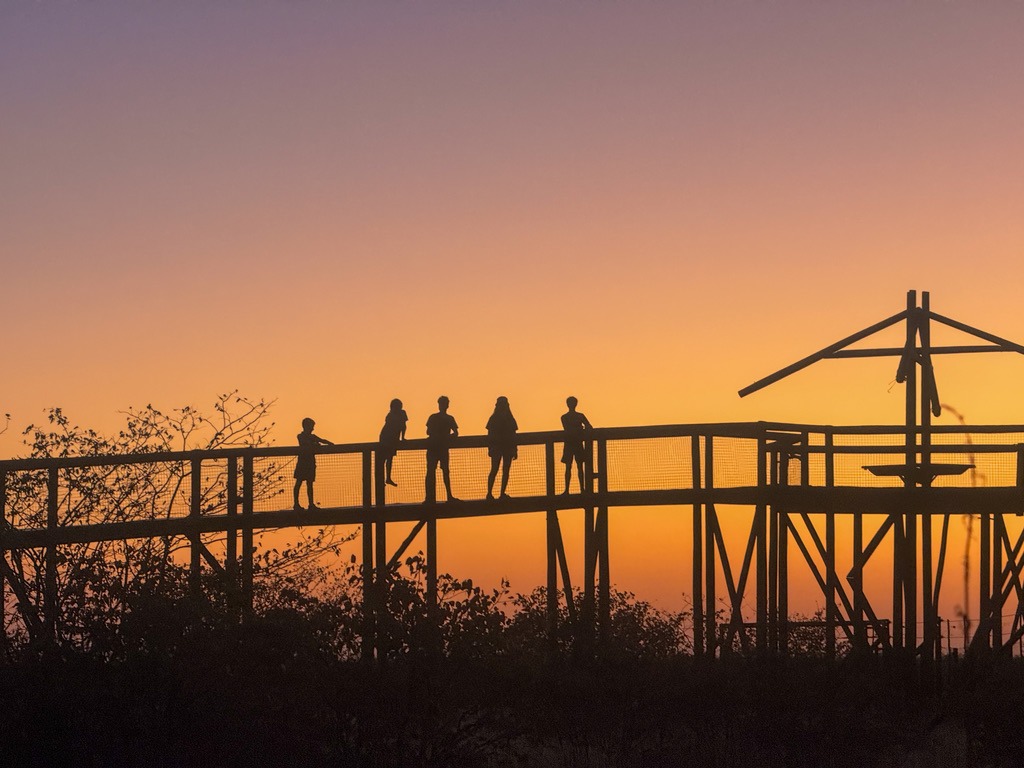
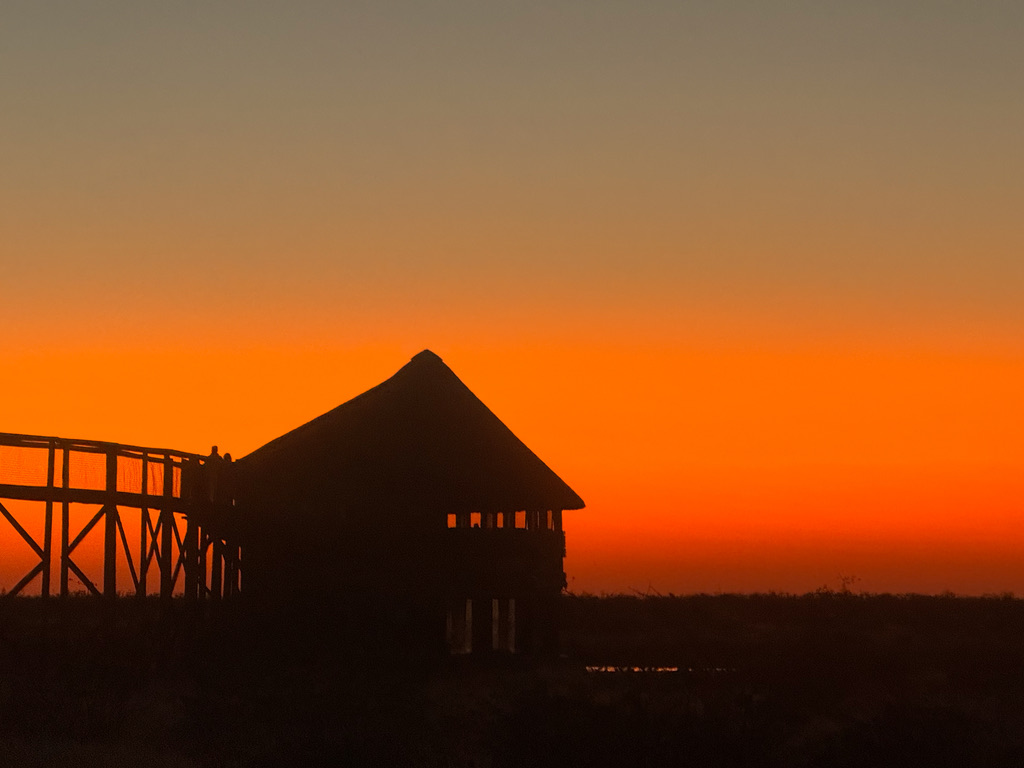
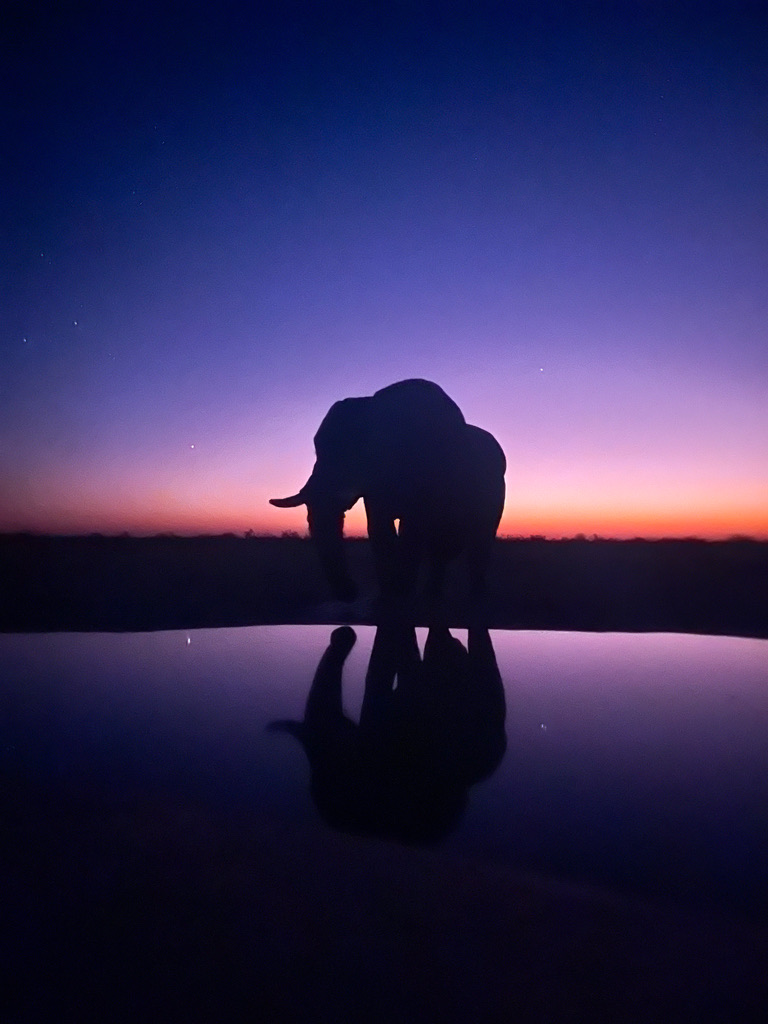
Lucas and Zara both had their birthdays in Etosha so Logan organised one of the camp restaurants to make a birthday cake. They asked him if he’d like small or large and he opted for large…not realising that large meant GINORMOUS! So Logan and the kids went around the camp and rounded up as many campers as they could find to share cake, laughs and travel stories with. So fun!
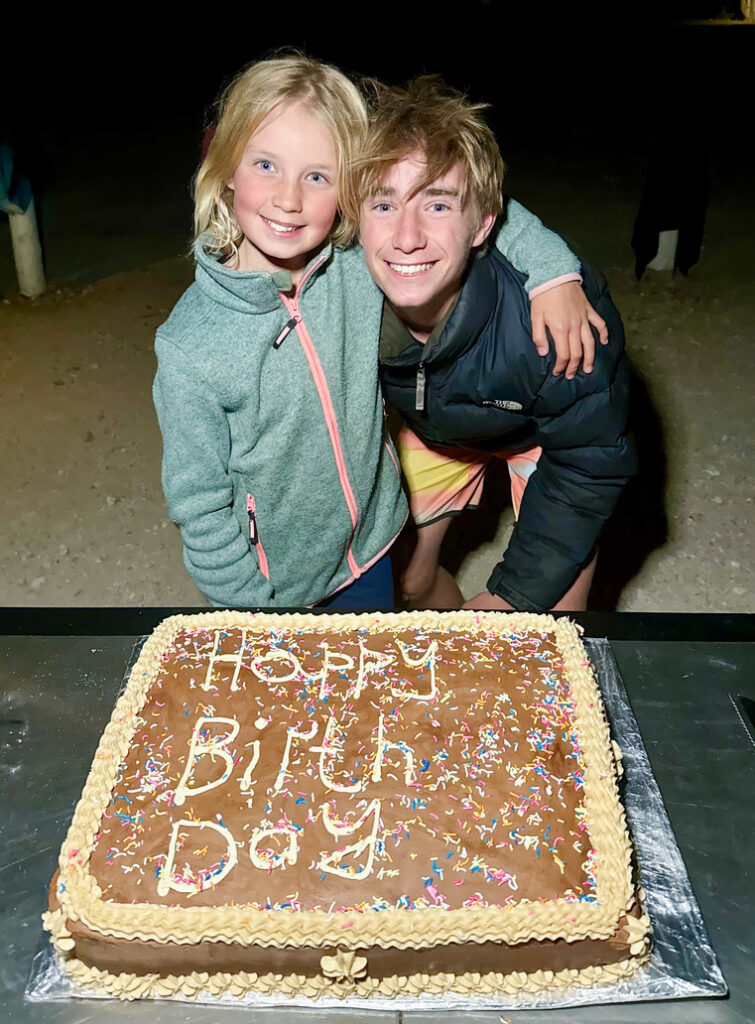
Lucas’s wish for his birthday was to see hyena and I was hoping for just a little bit more rhino action (although we were very grateful for the rhinos we had already seen). It was truly amazing that our final night in Etosha brought the most incredible show of 4 black rhino and many hyena interacting at the Halali waterhole for nearly 2 hours! (it’s tricky to take photos of the creatures who like to come into the open after dark!).

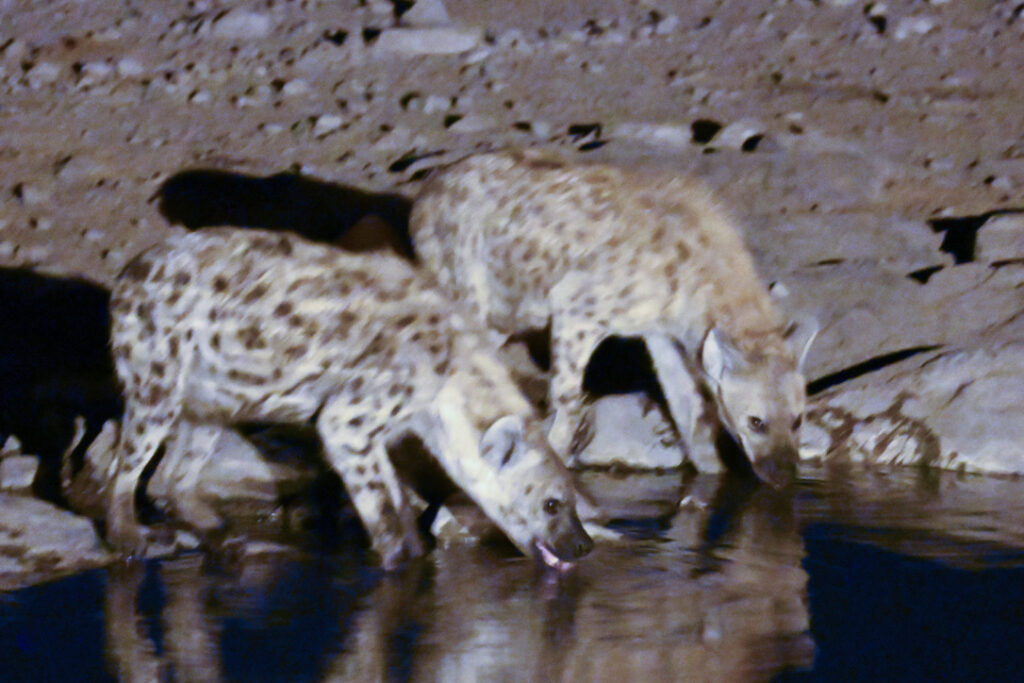
From here we are heading up to the north east of Namibia to the Zambezi region (previously called Caprivi). More adventures await!
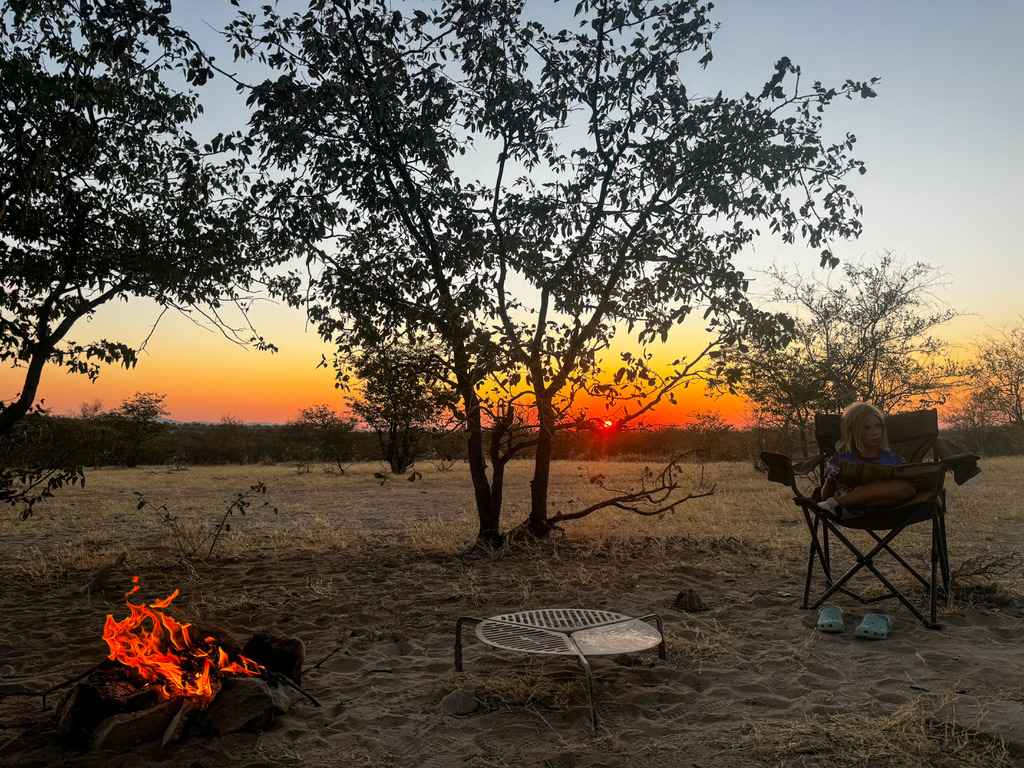
Magestic images and stunning storytelling.
I felt like I was an actual member of your traveling family- such intimate photos! Thanks for sharing your world and travels with us. Happy trails to you and your family, Steph’s mom Linda
Steph’s mom Linda
Thanks so much Linda – it’s lovely to have you following along